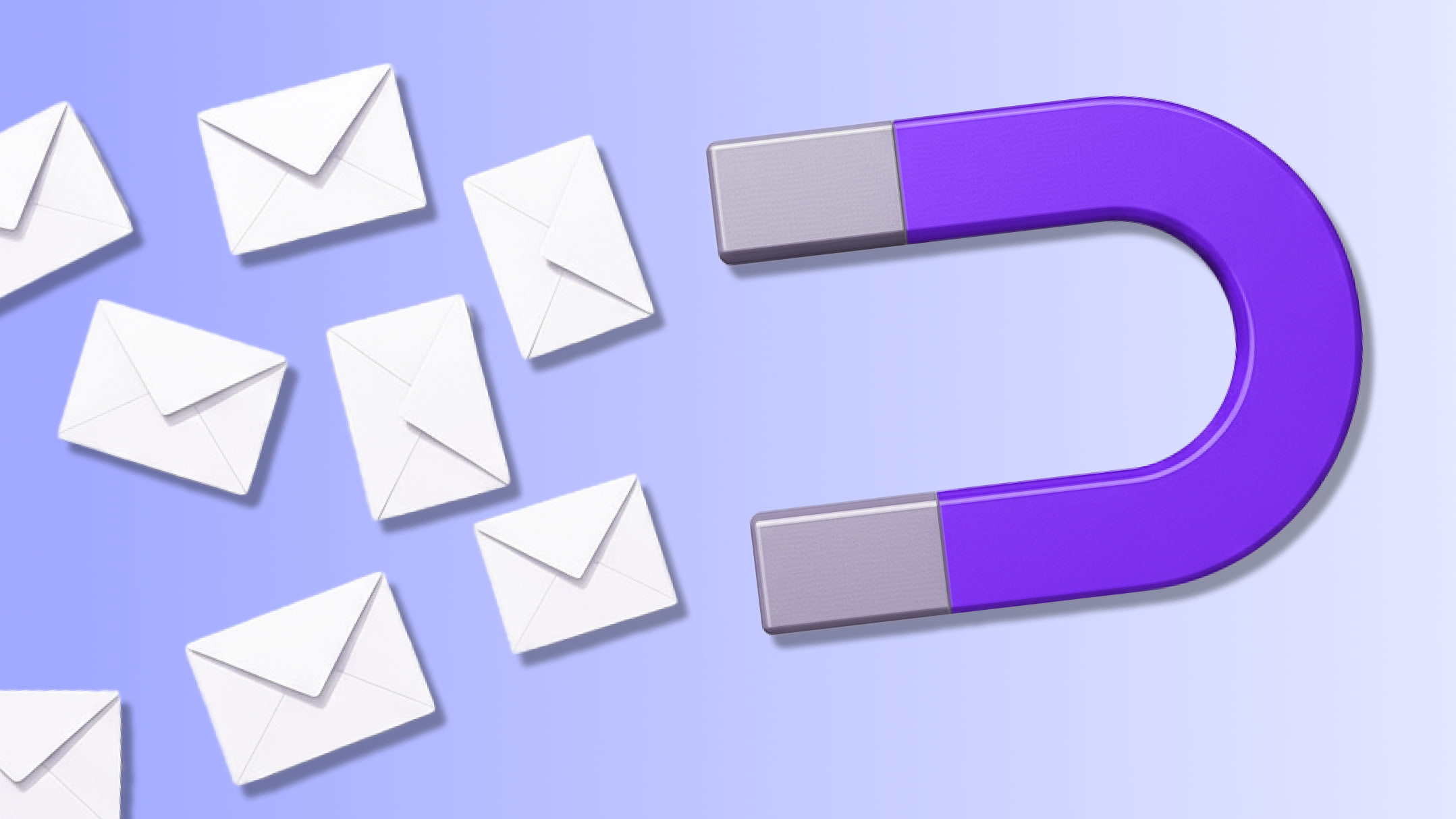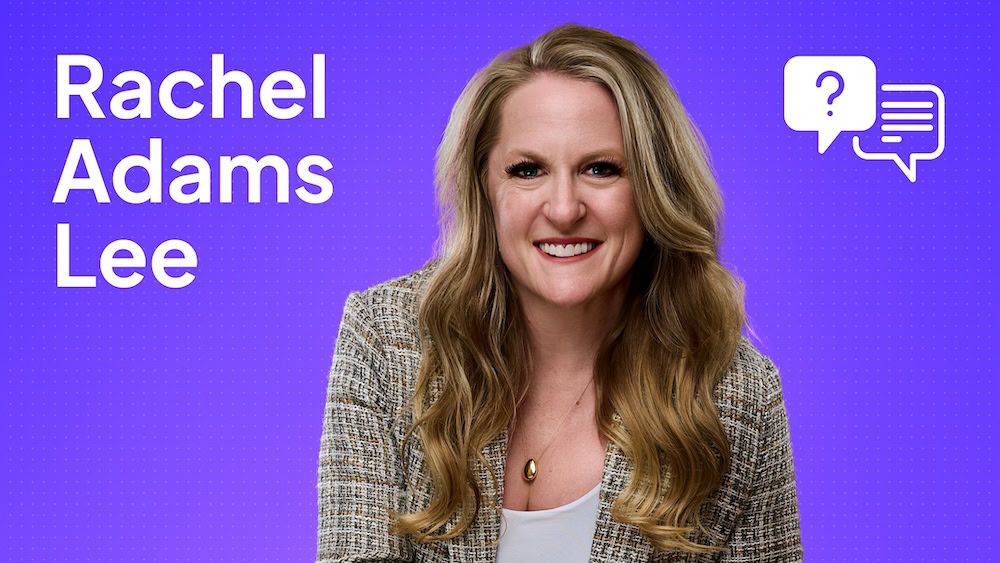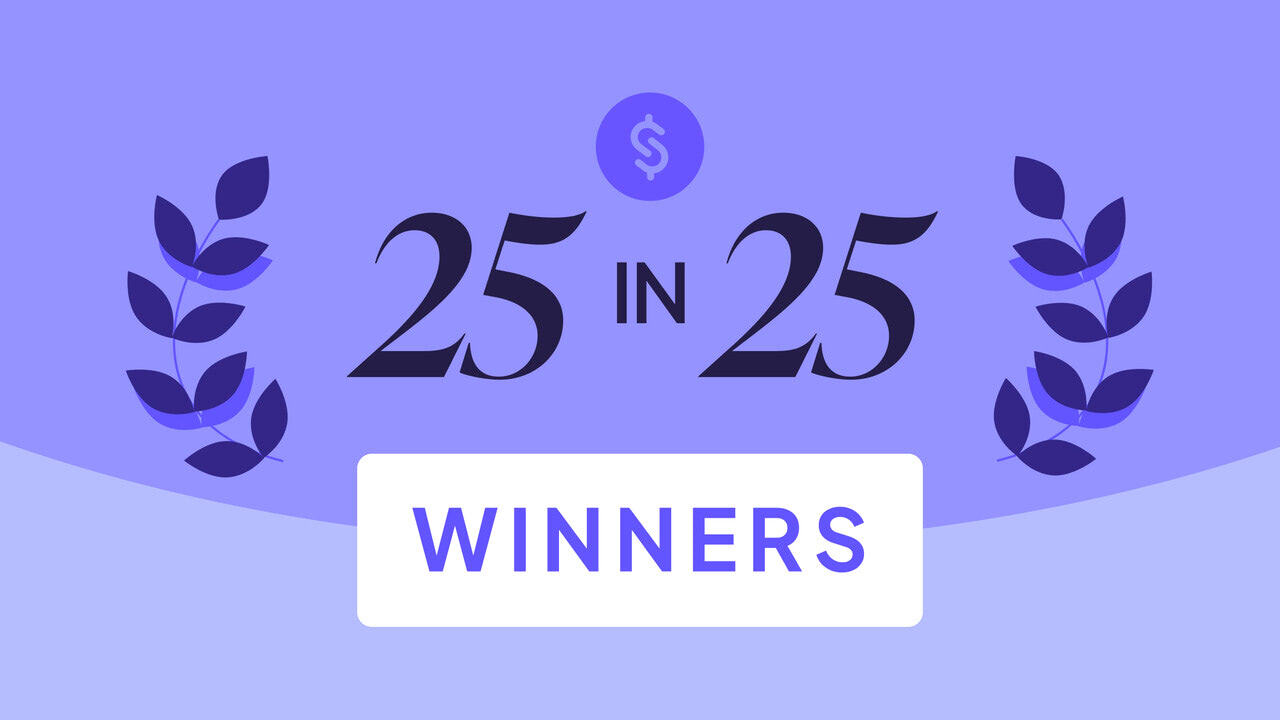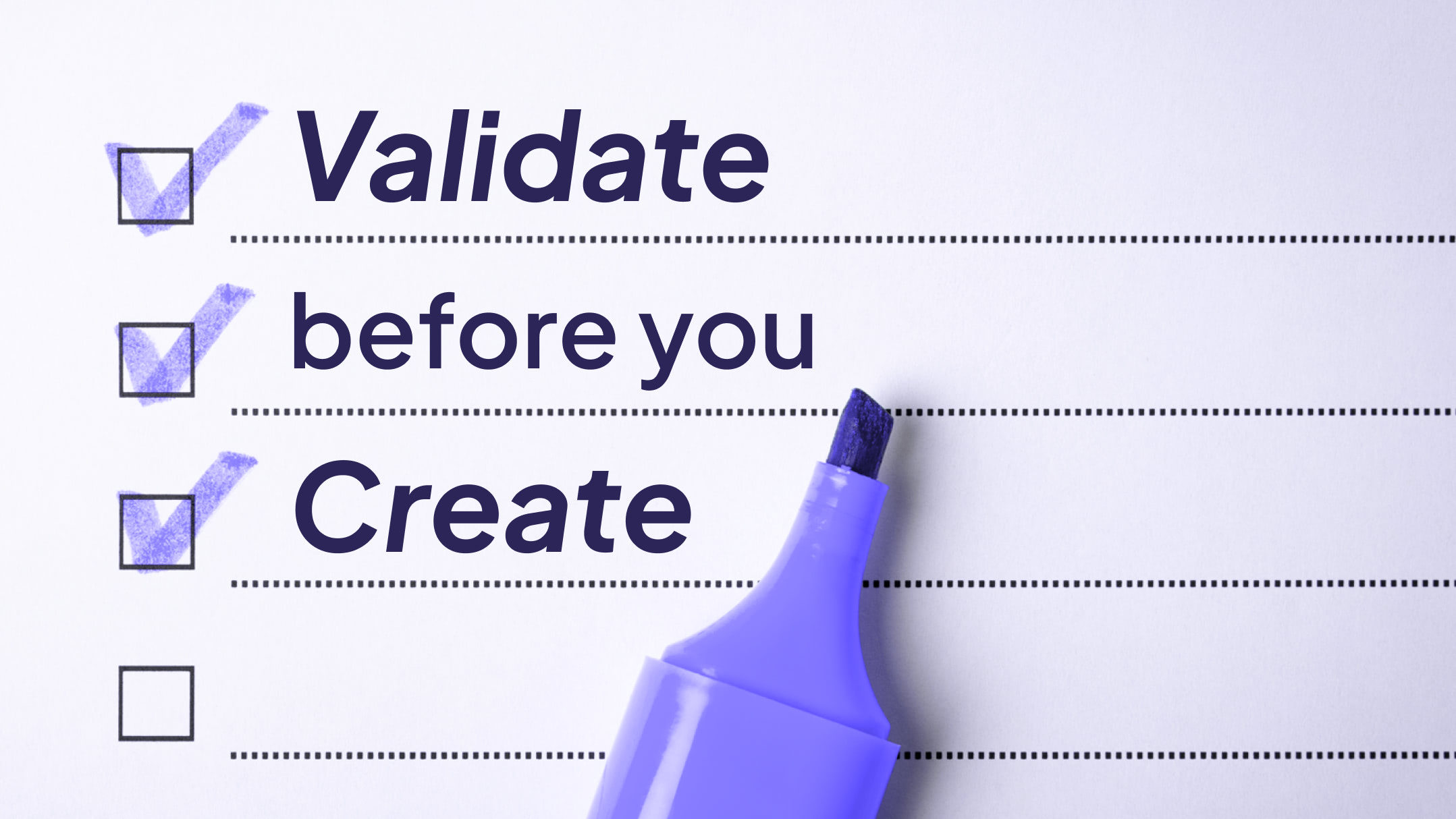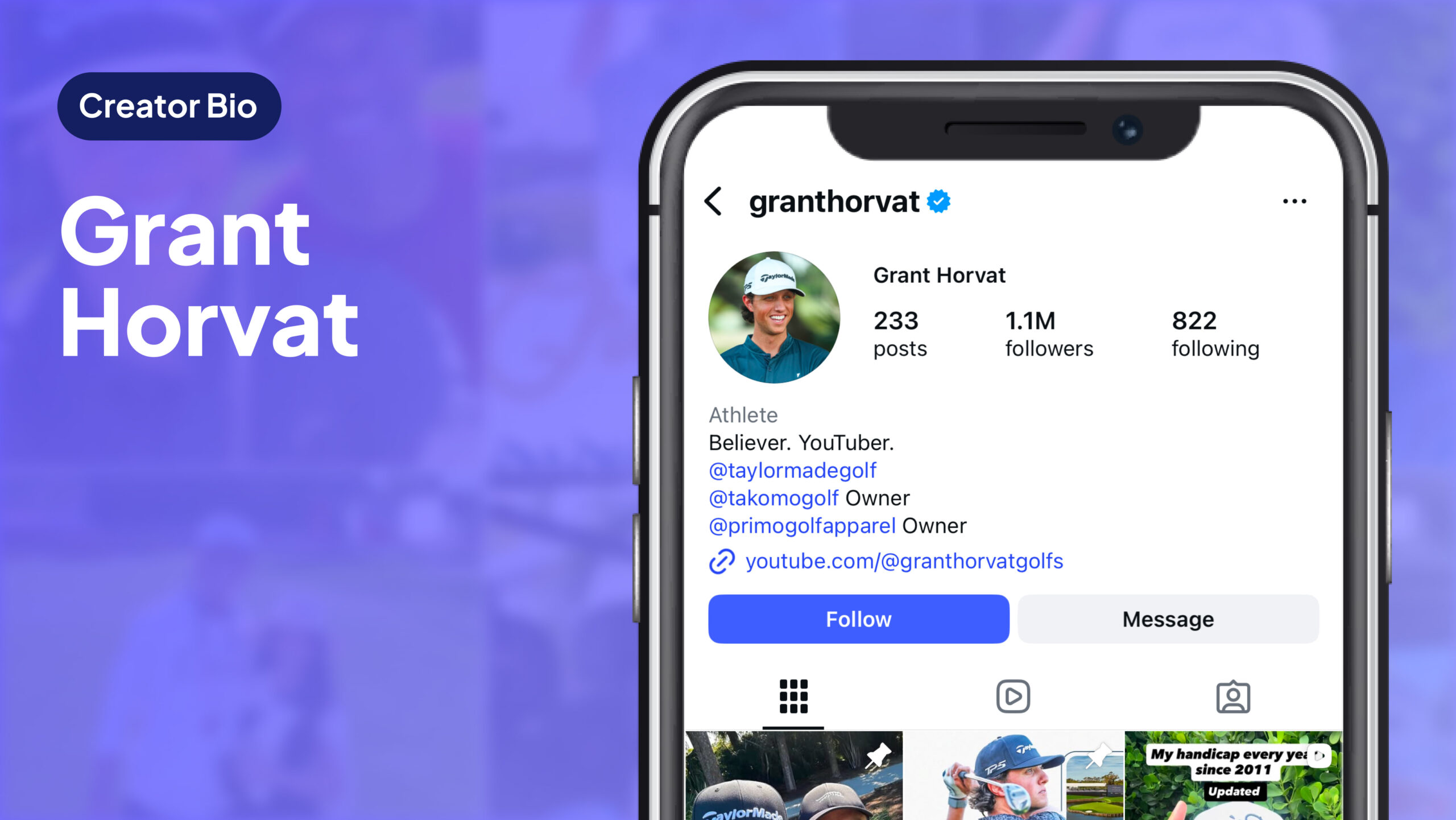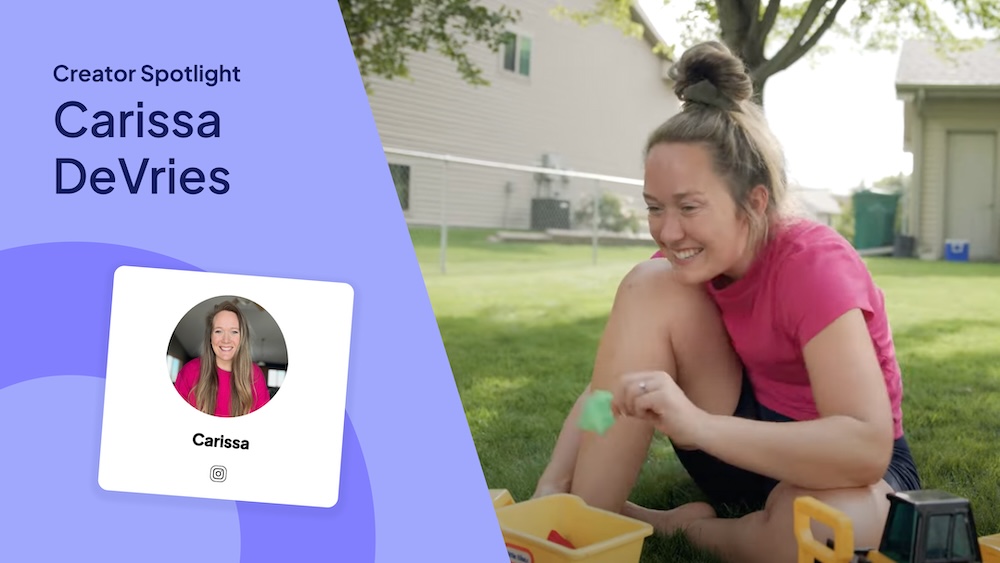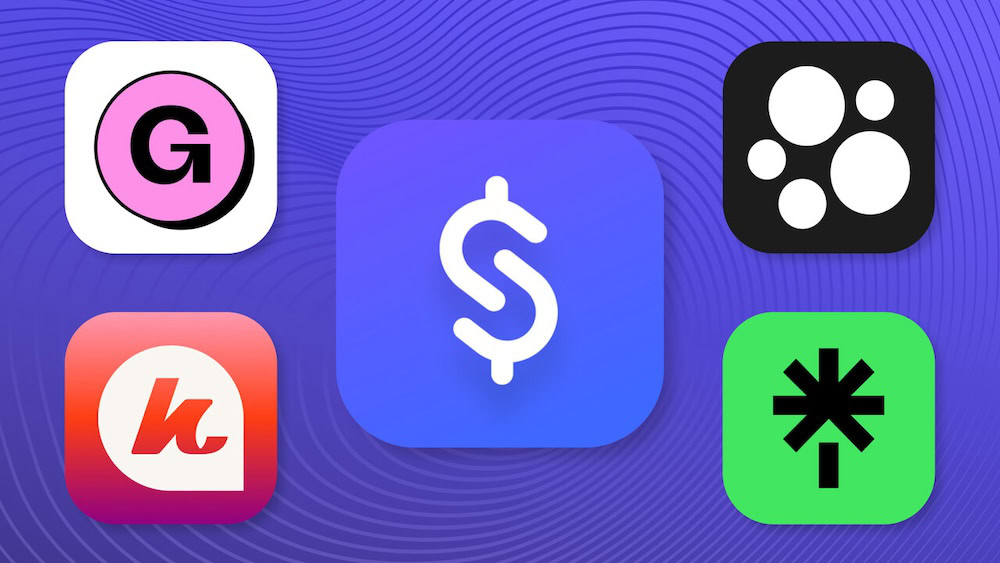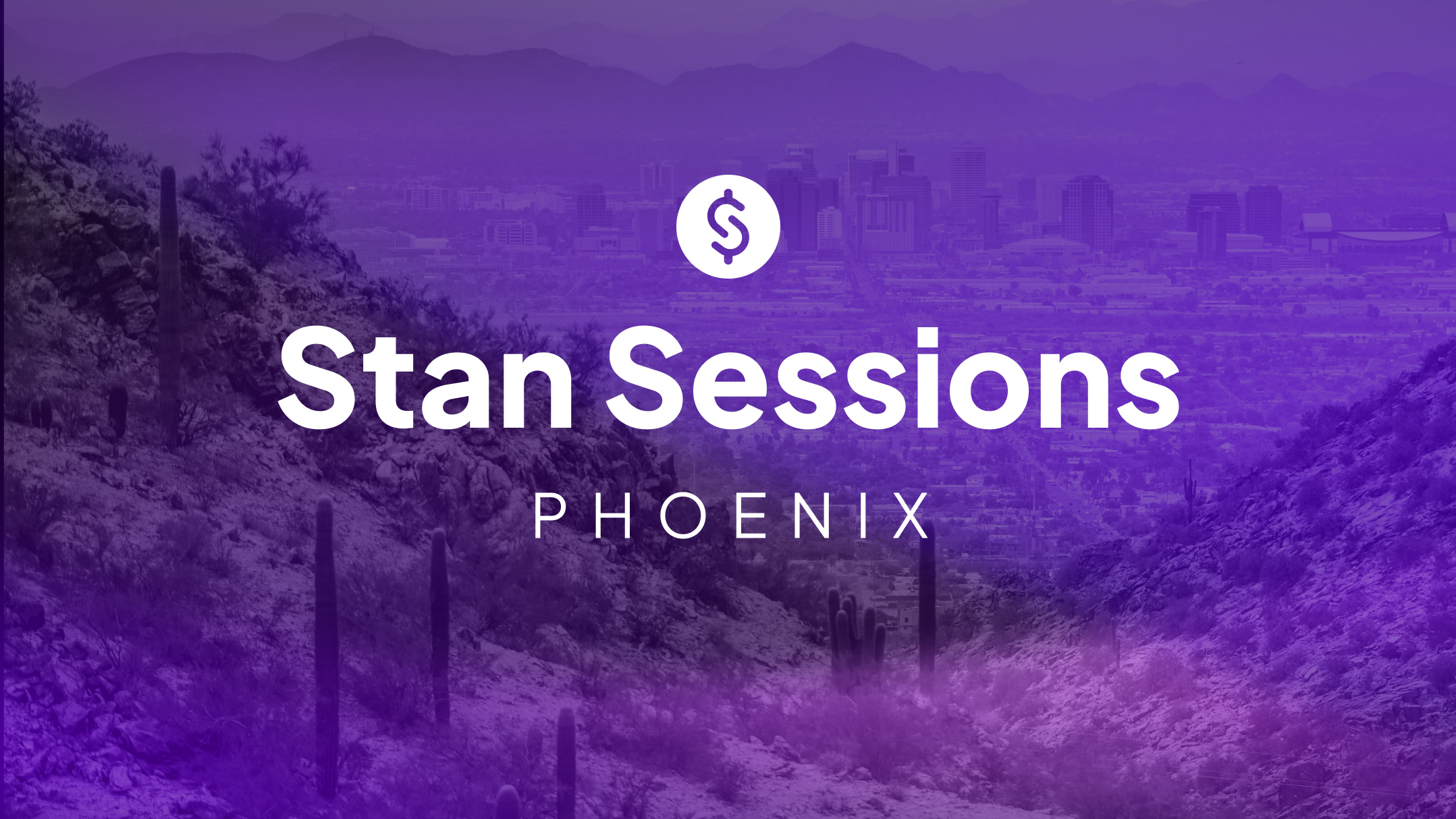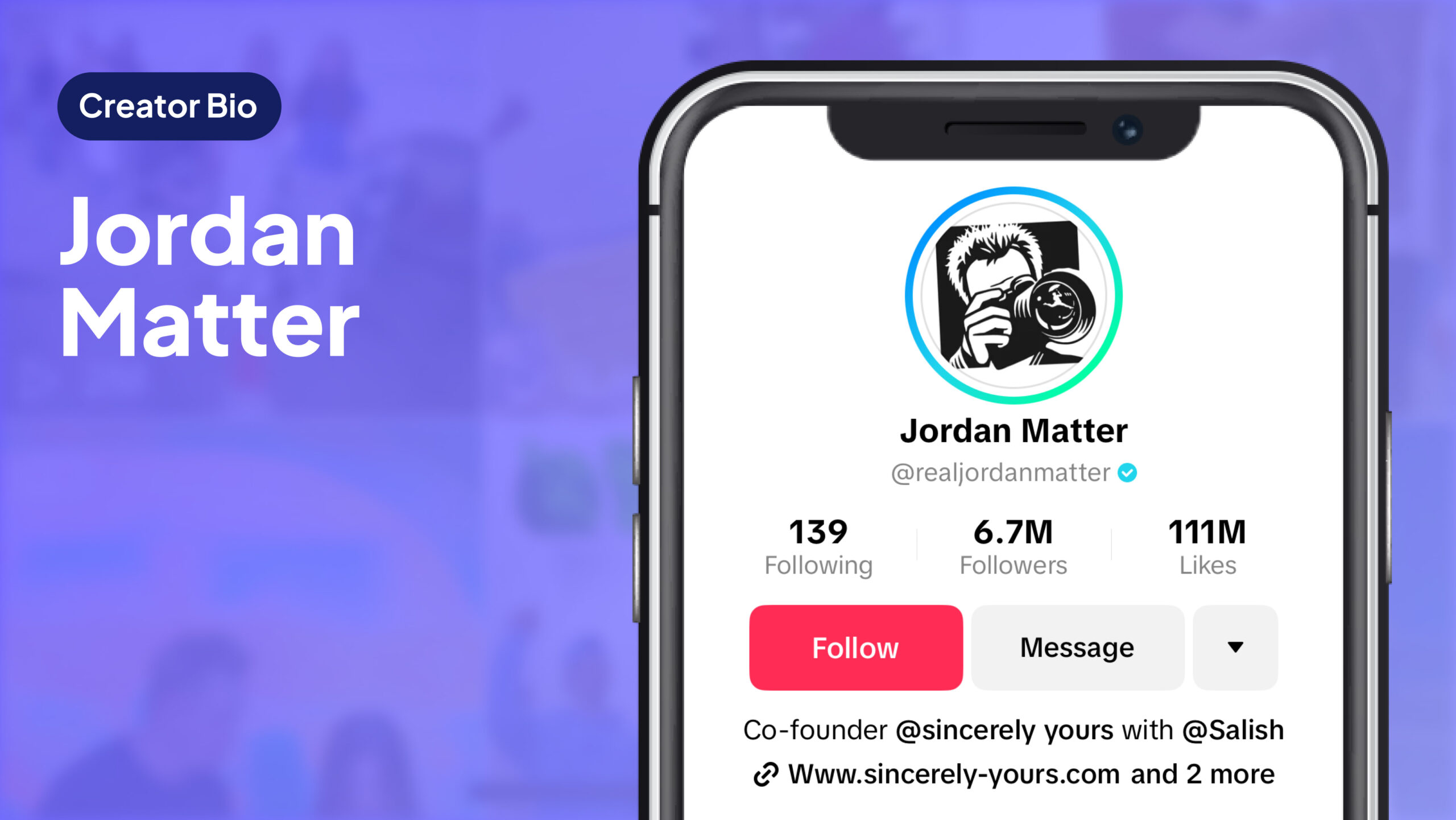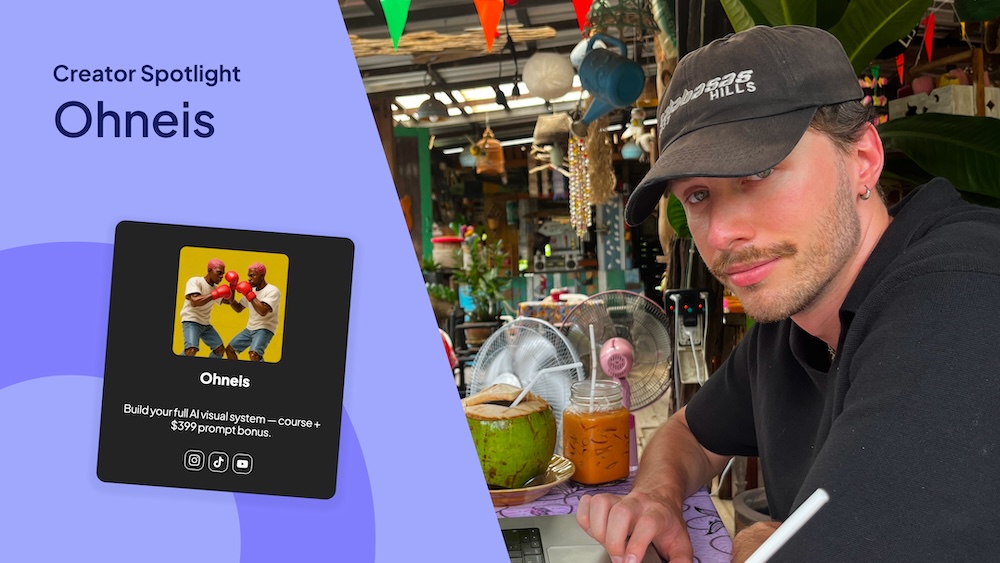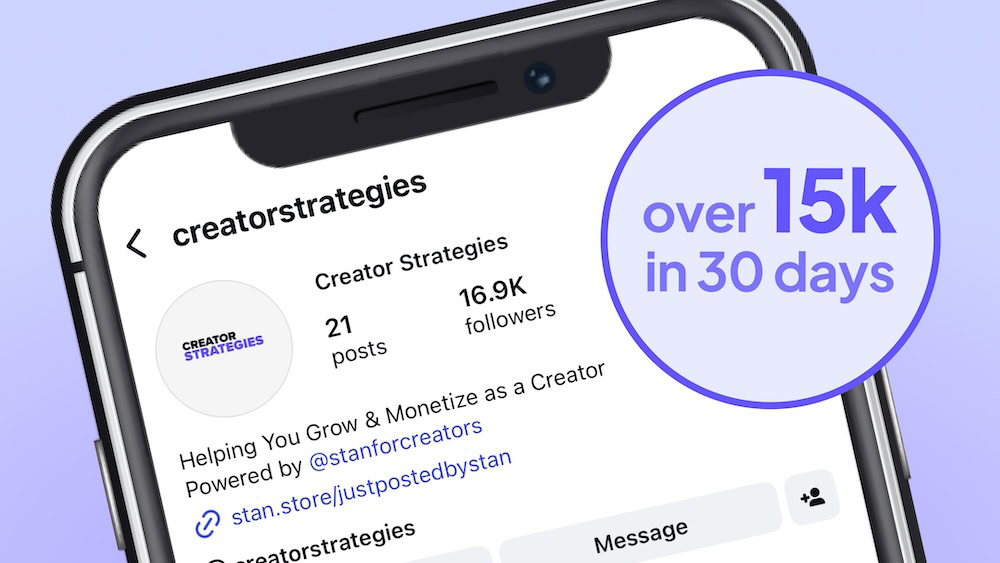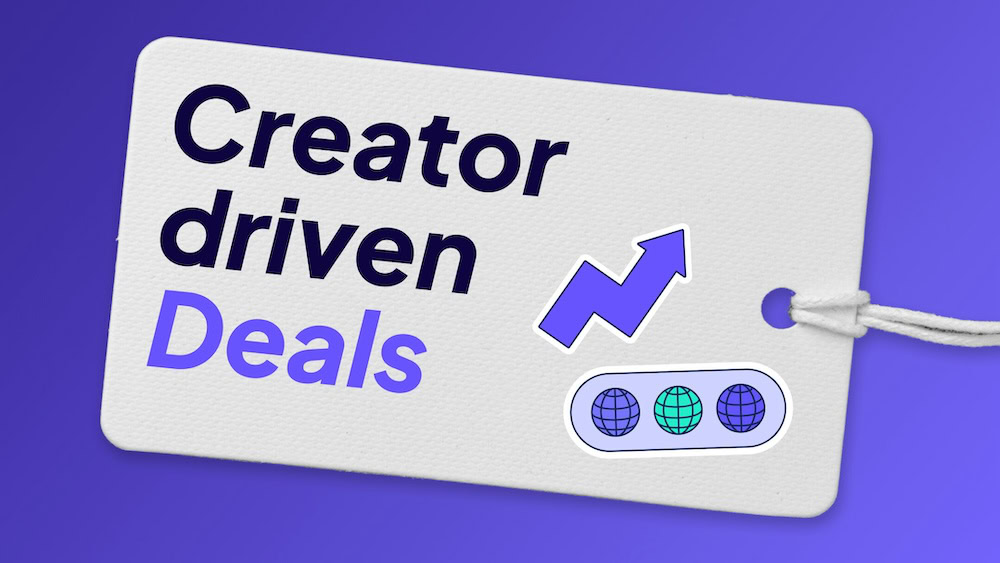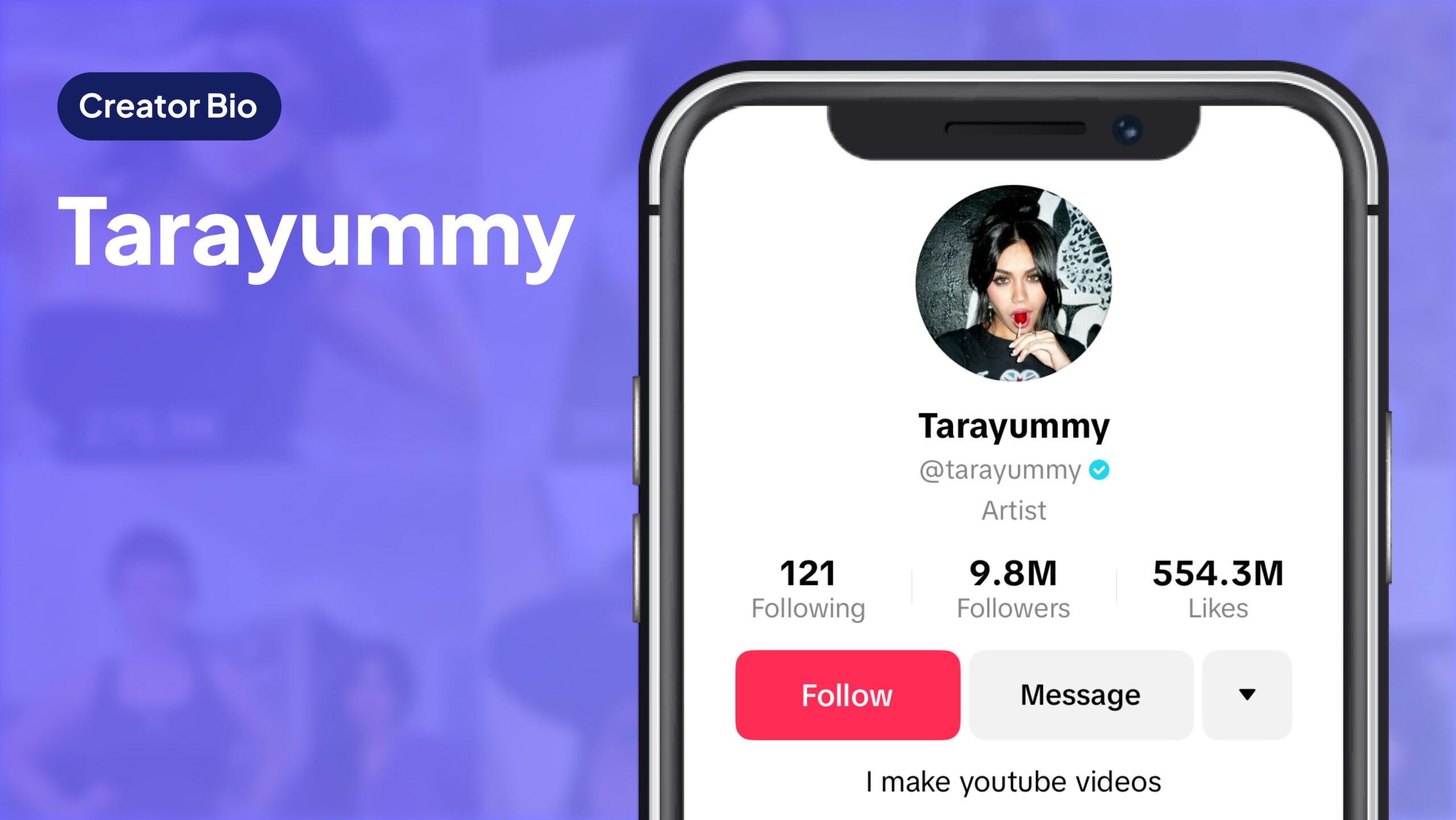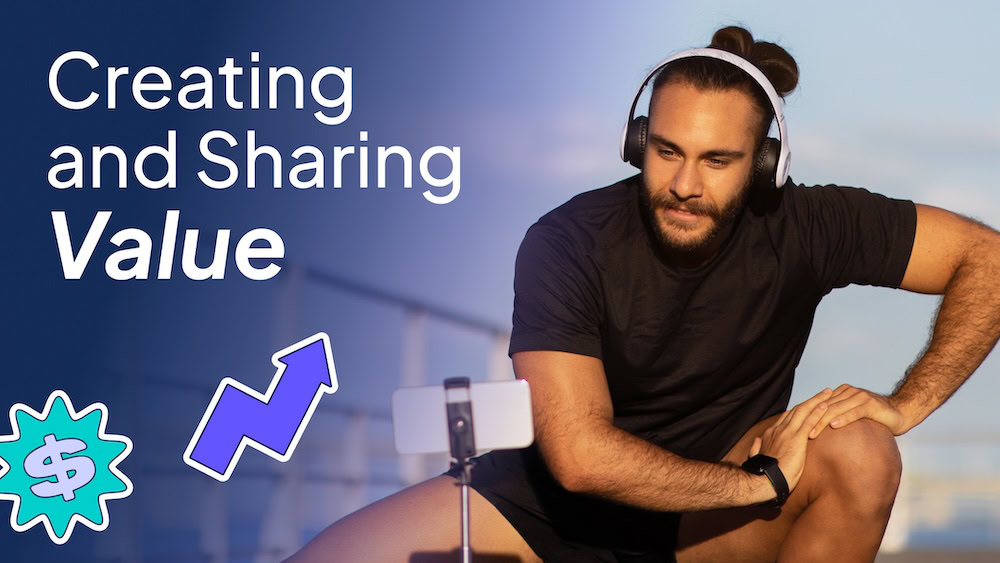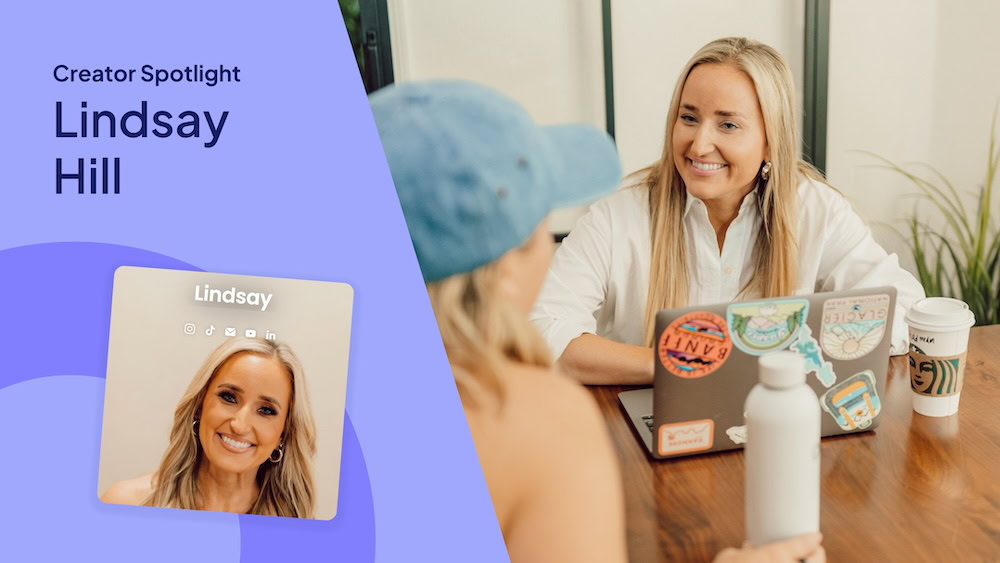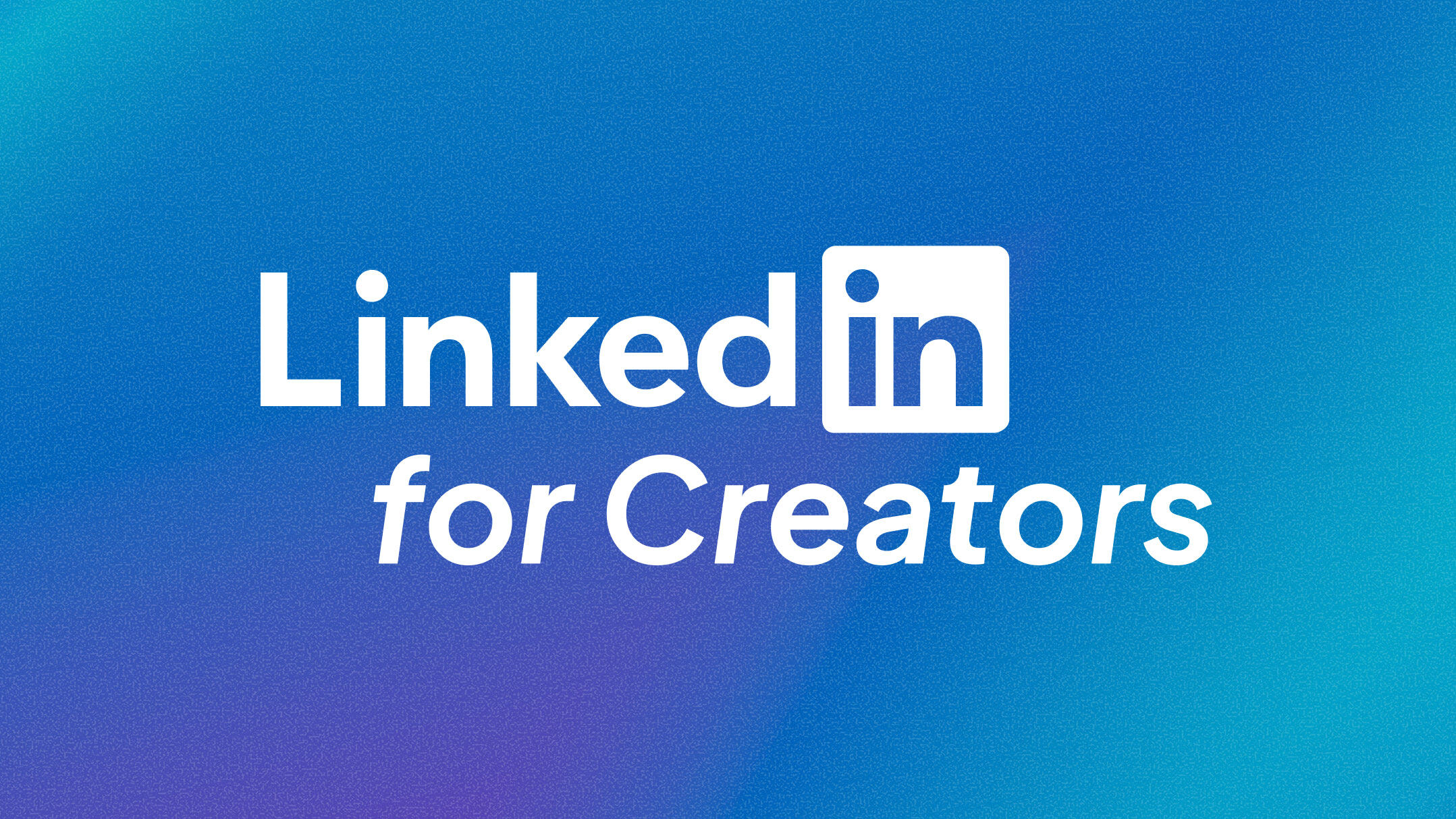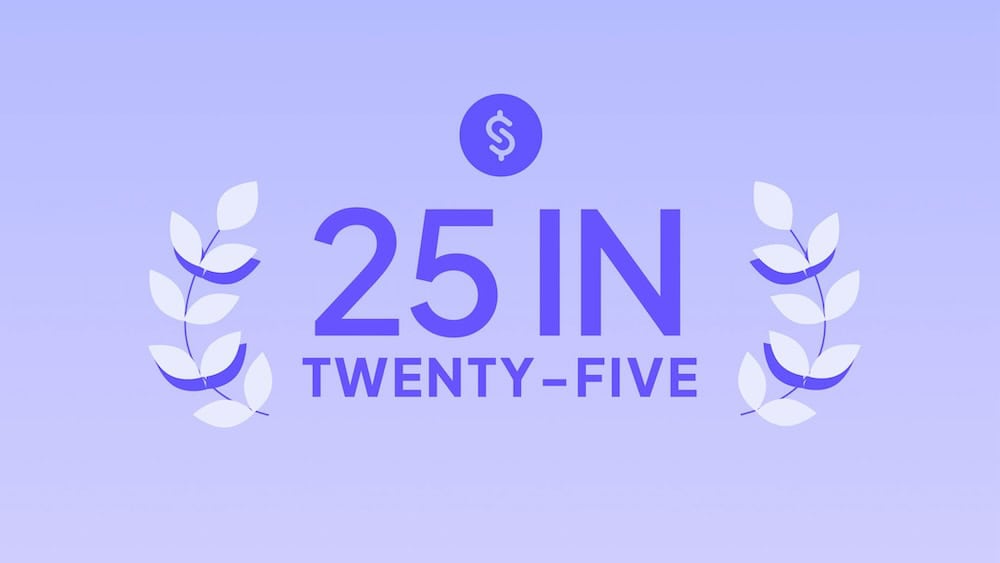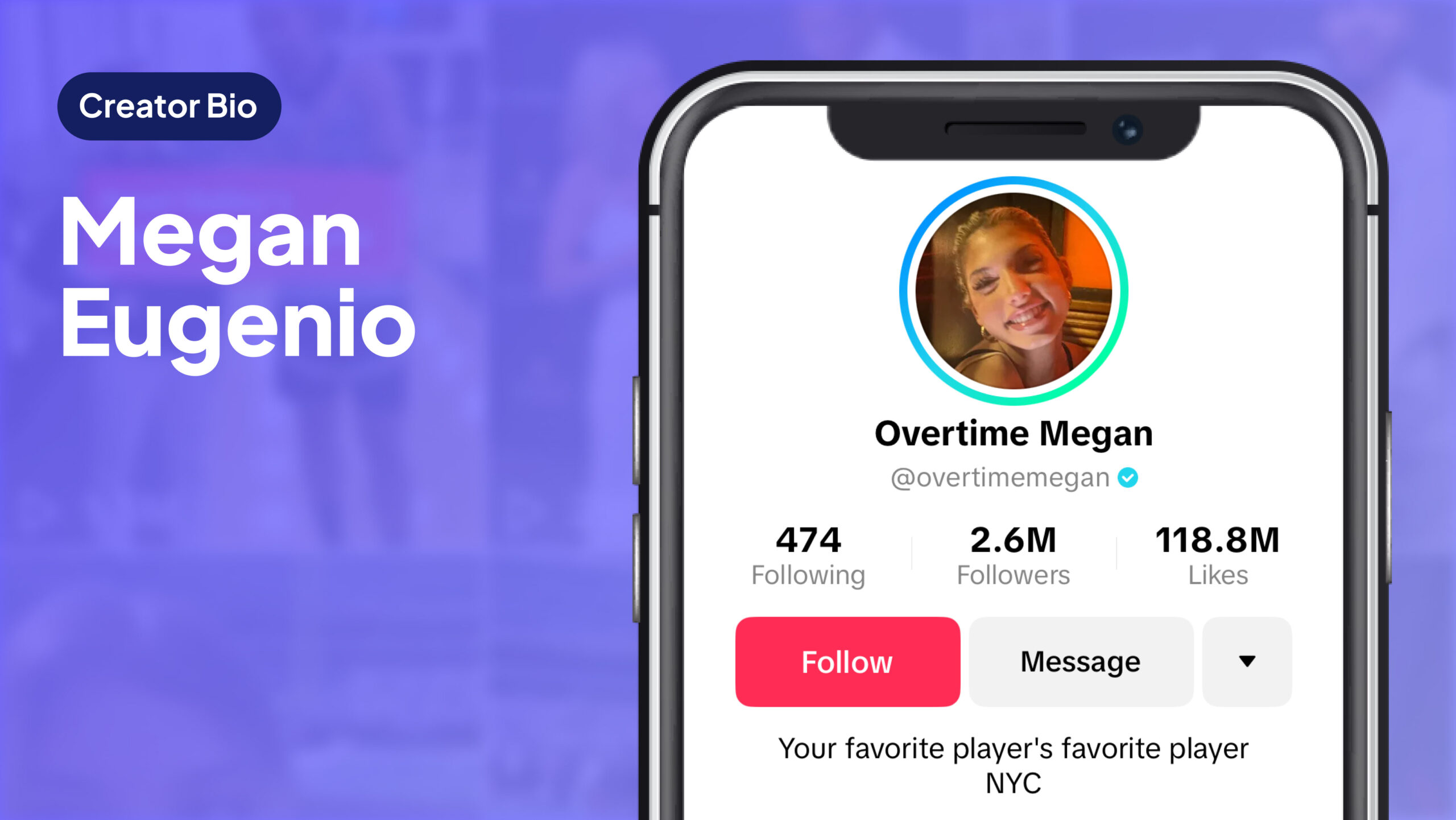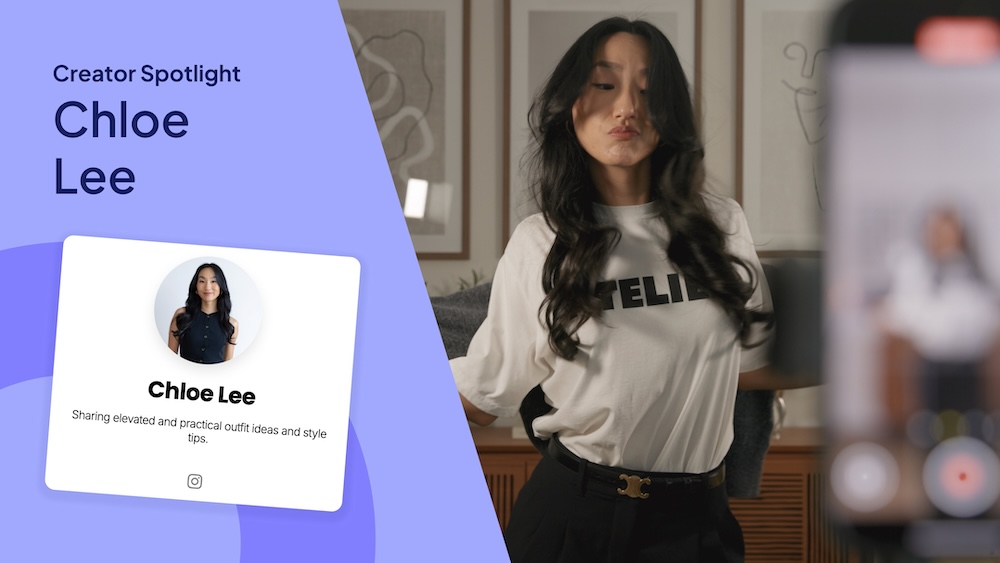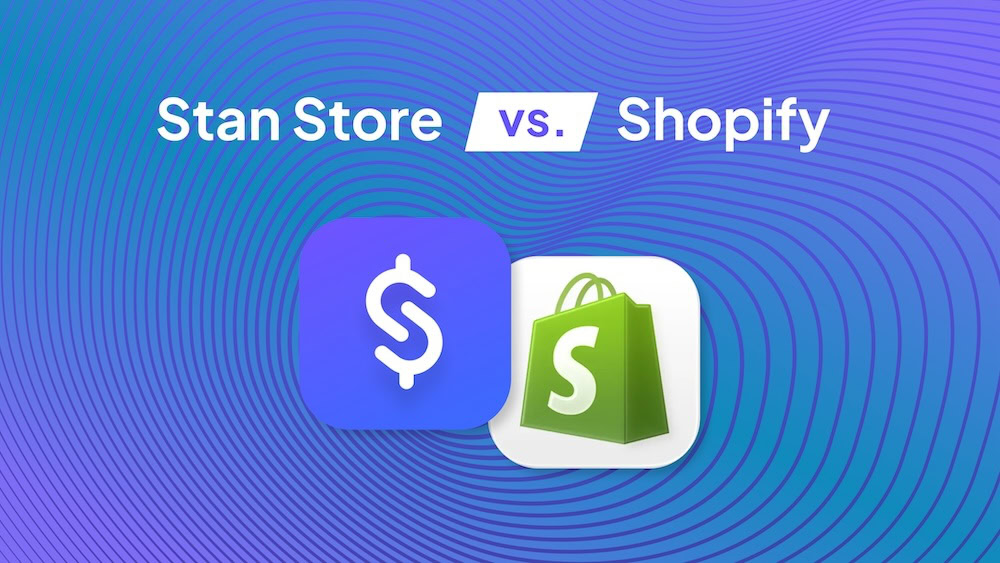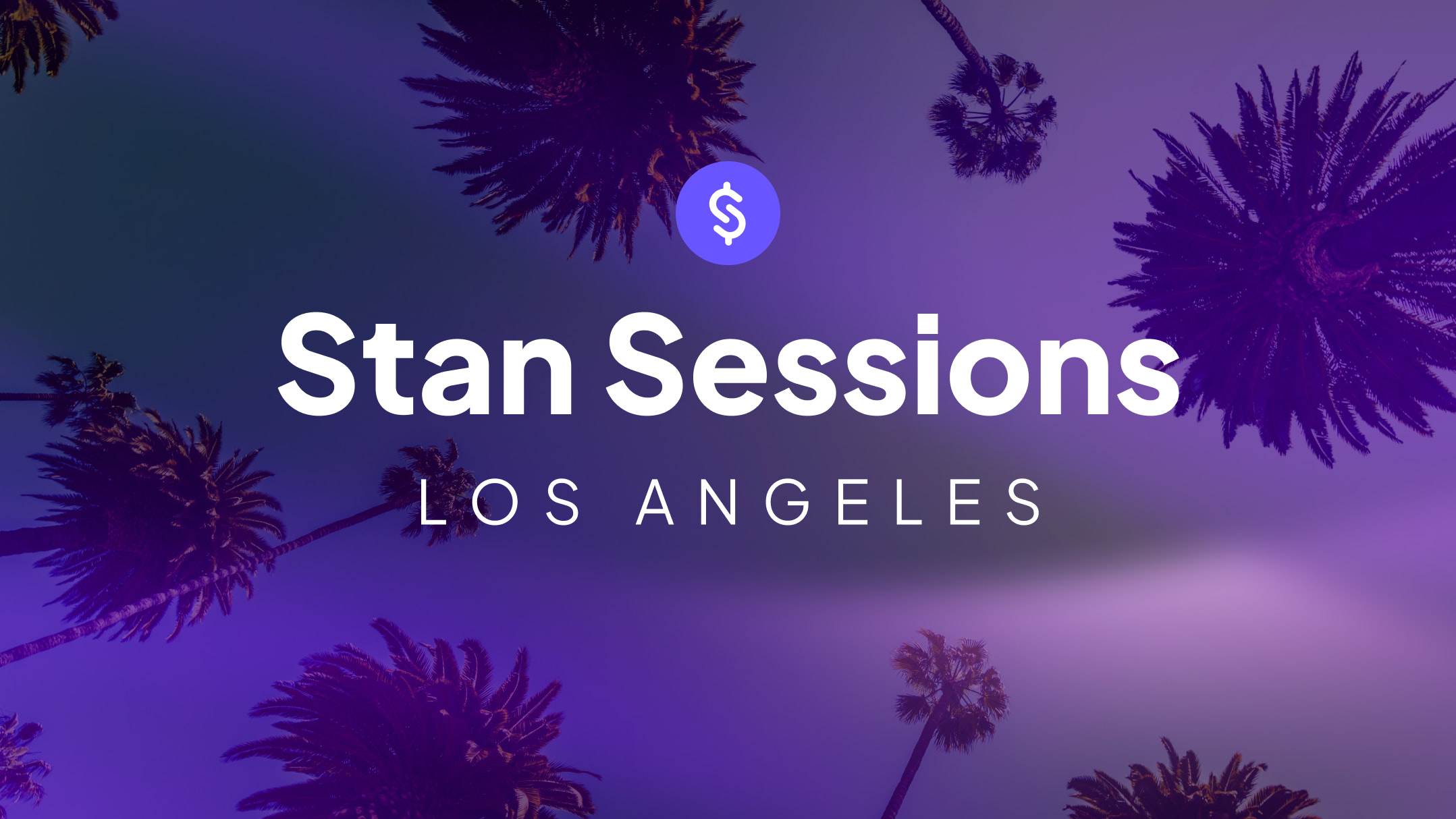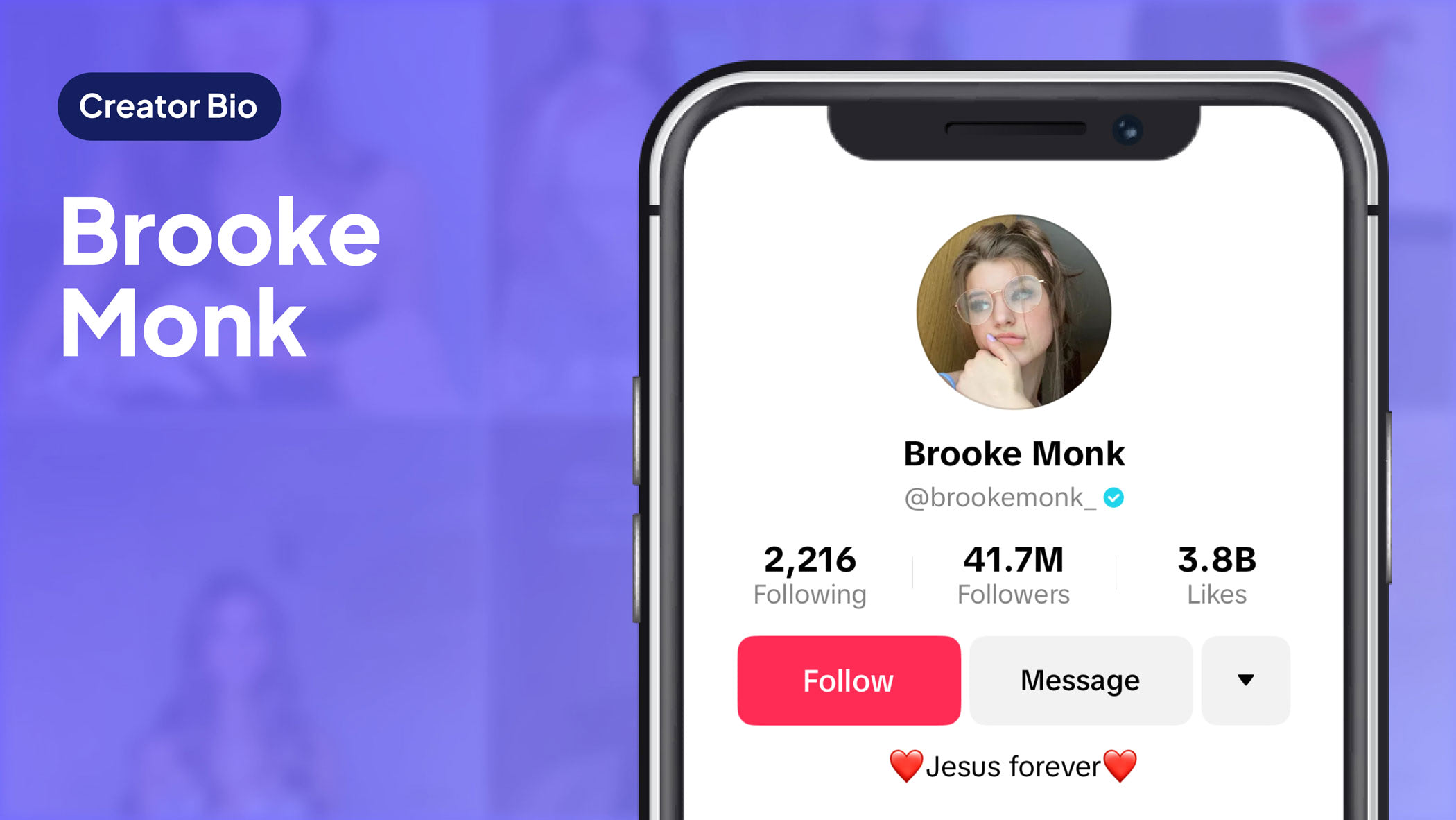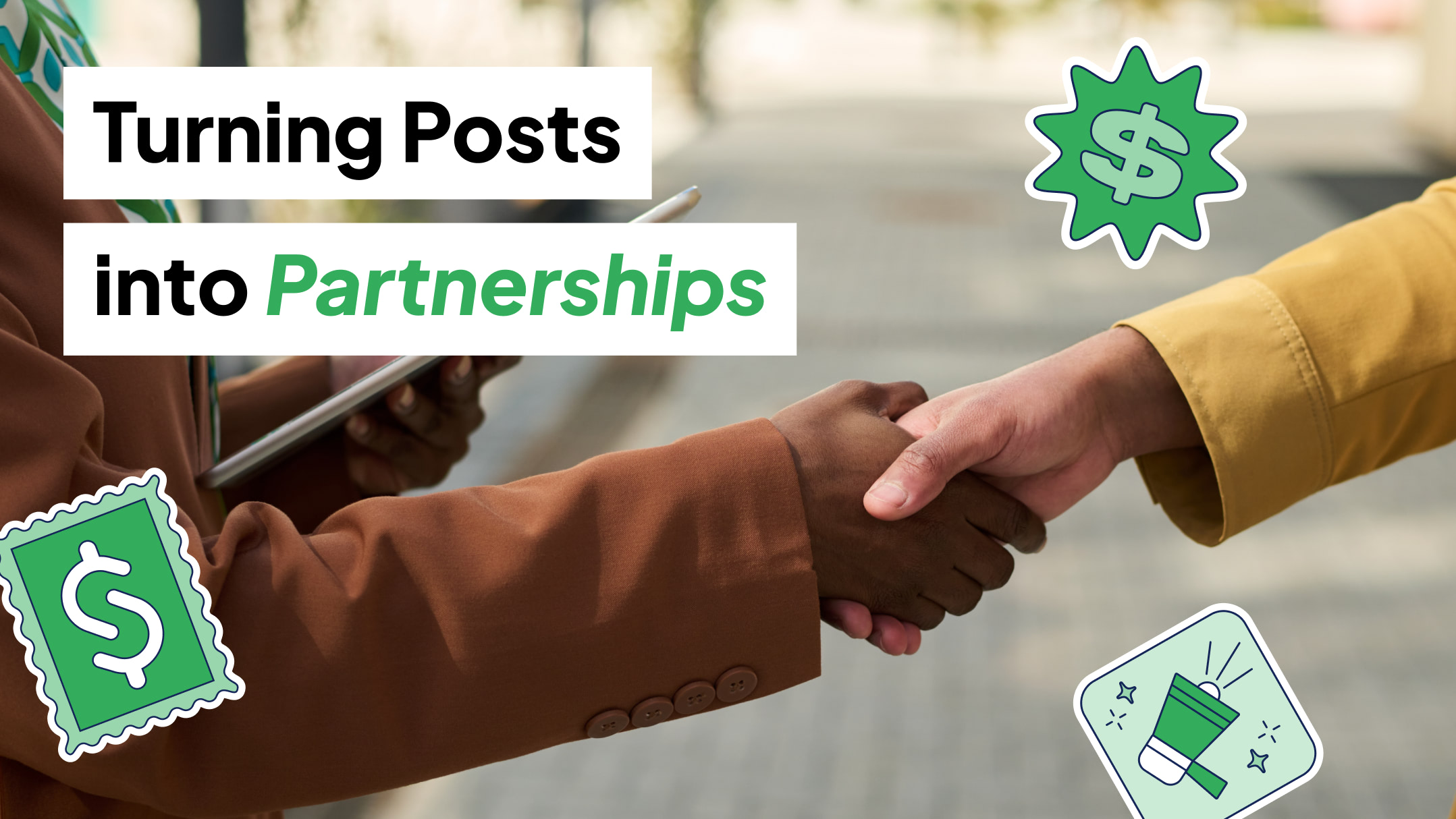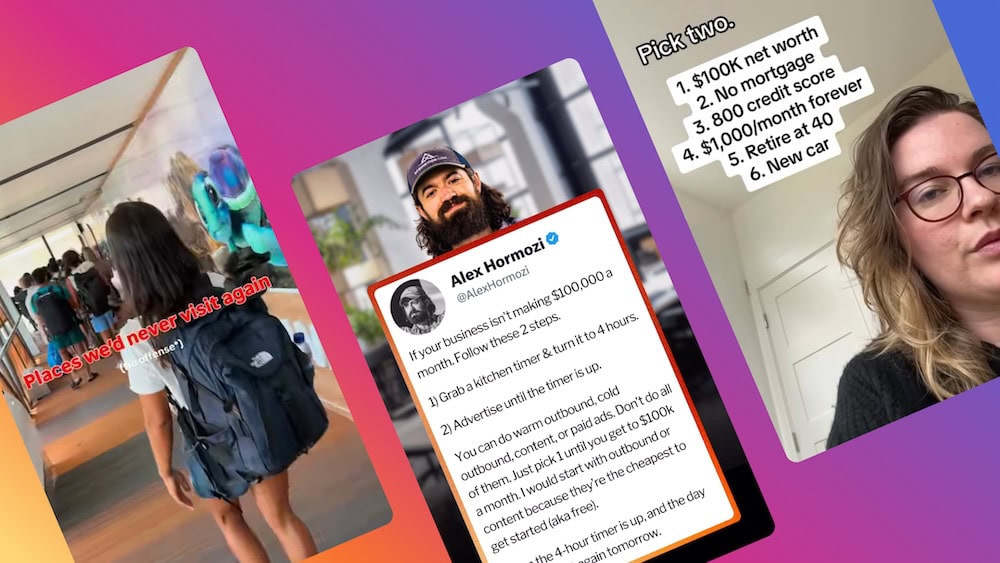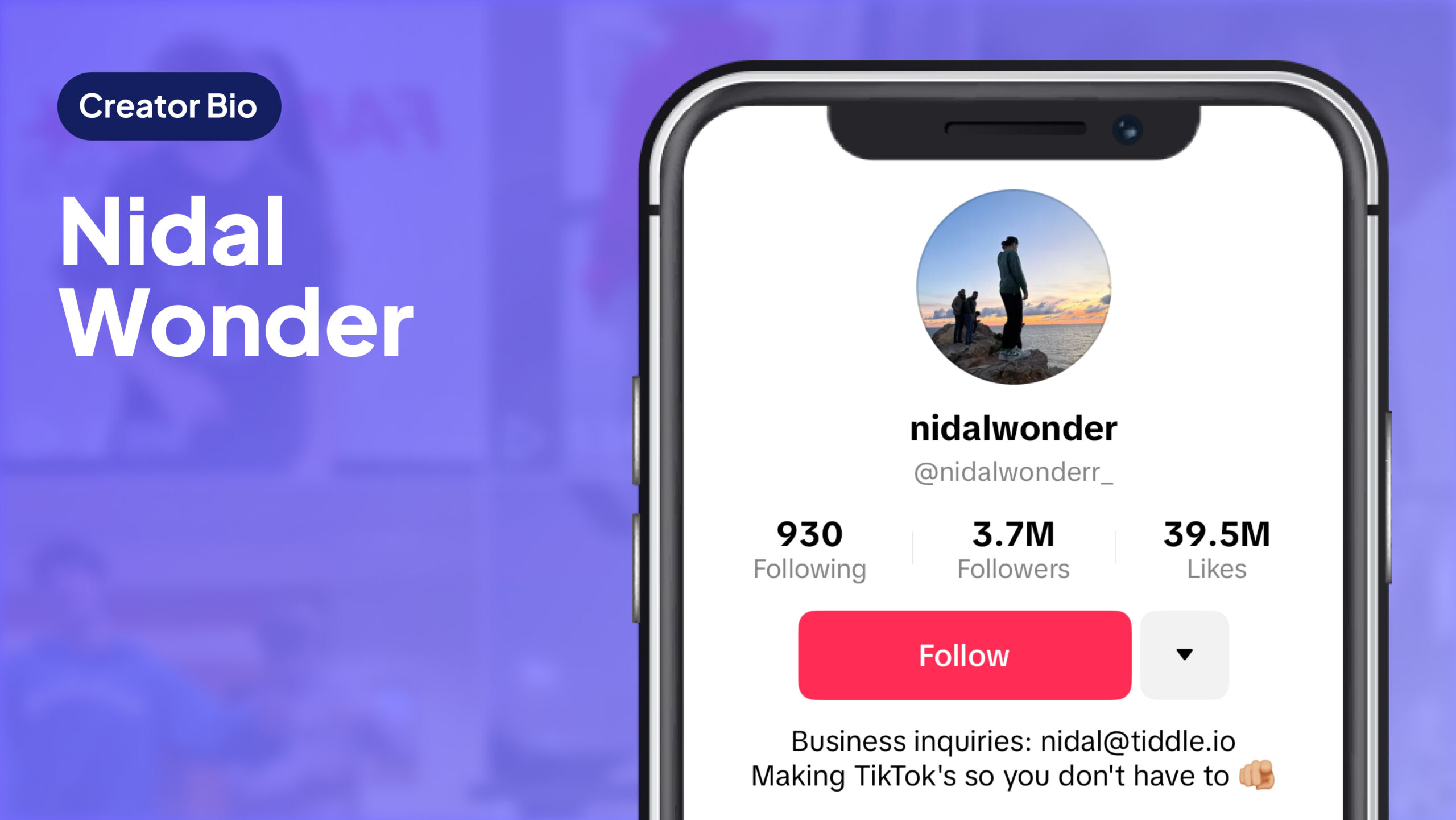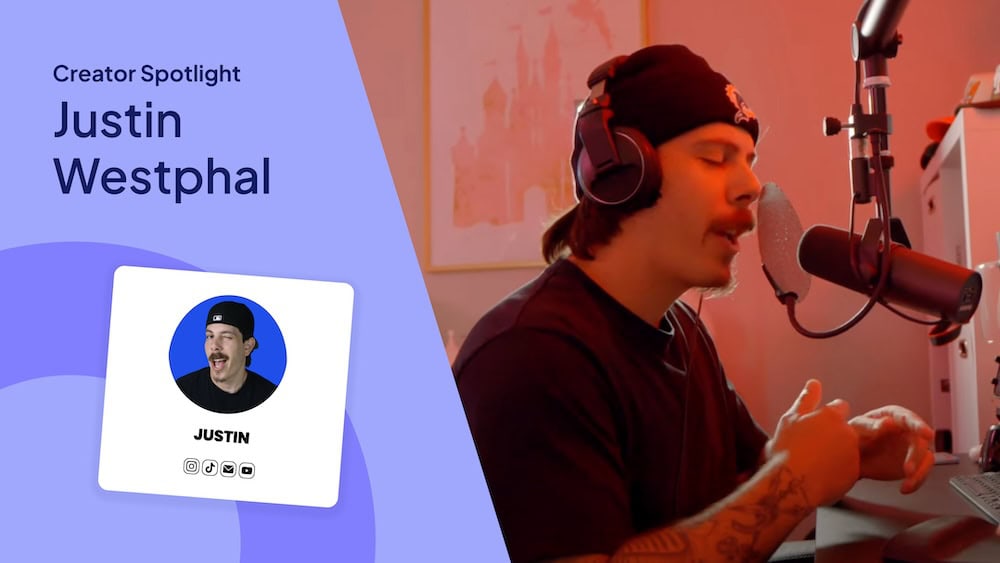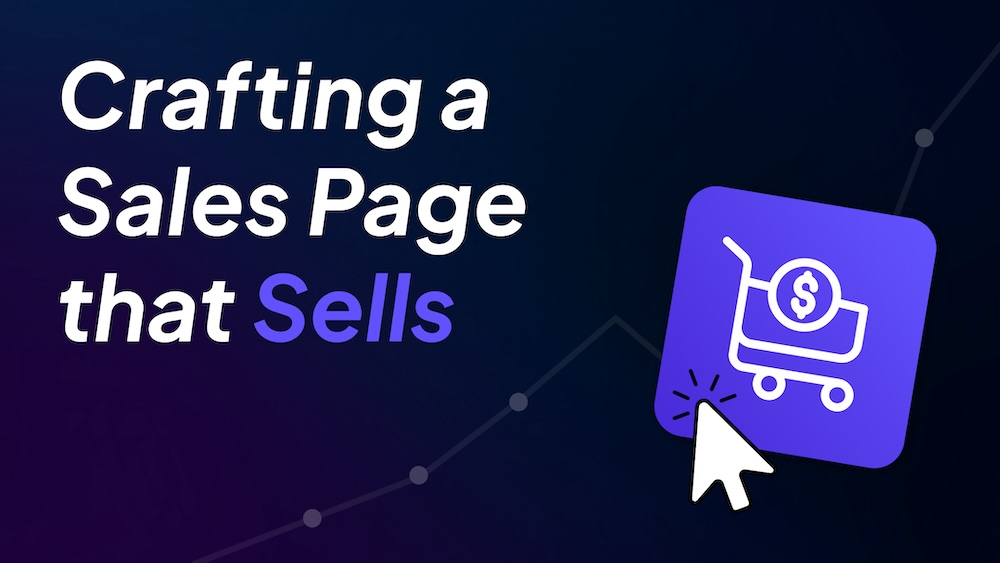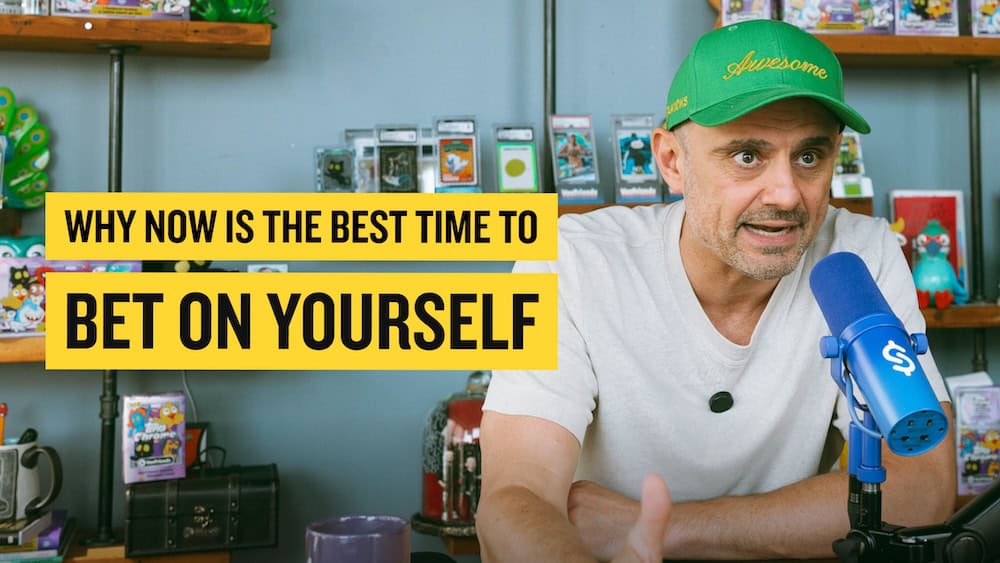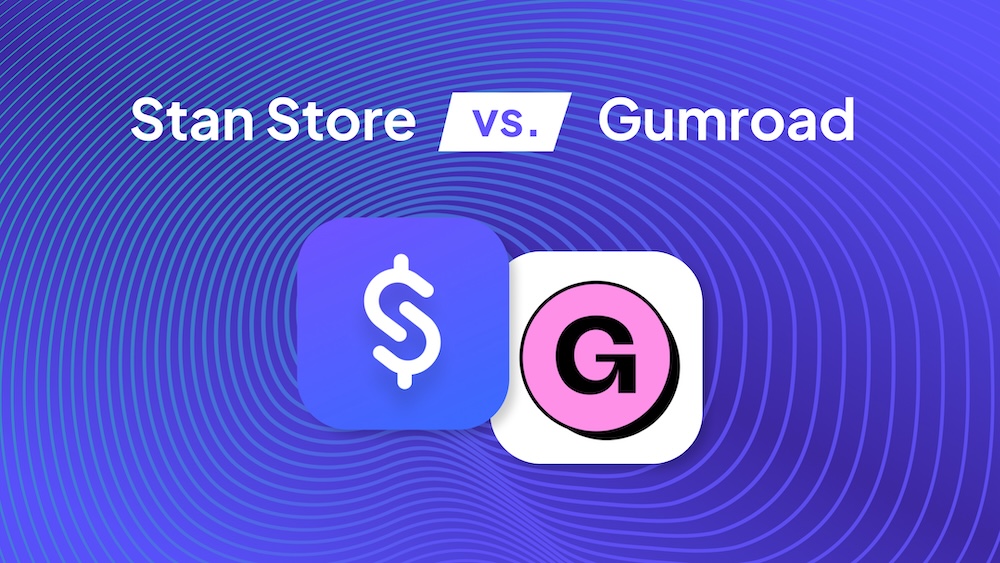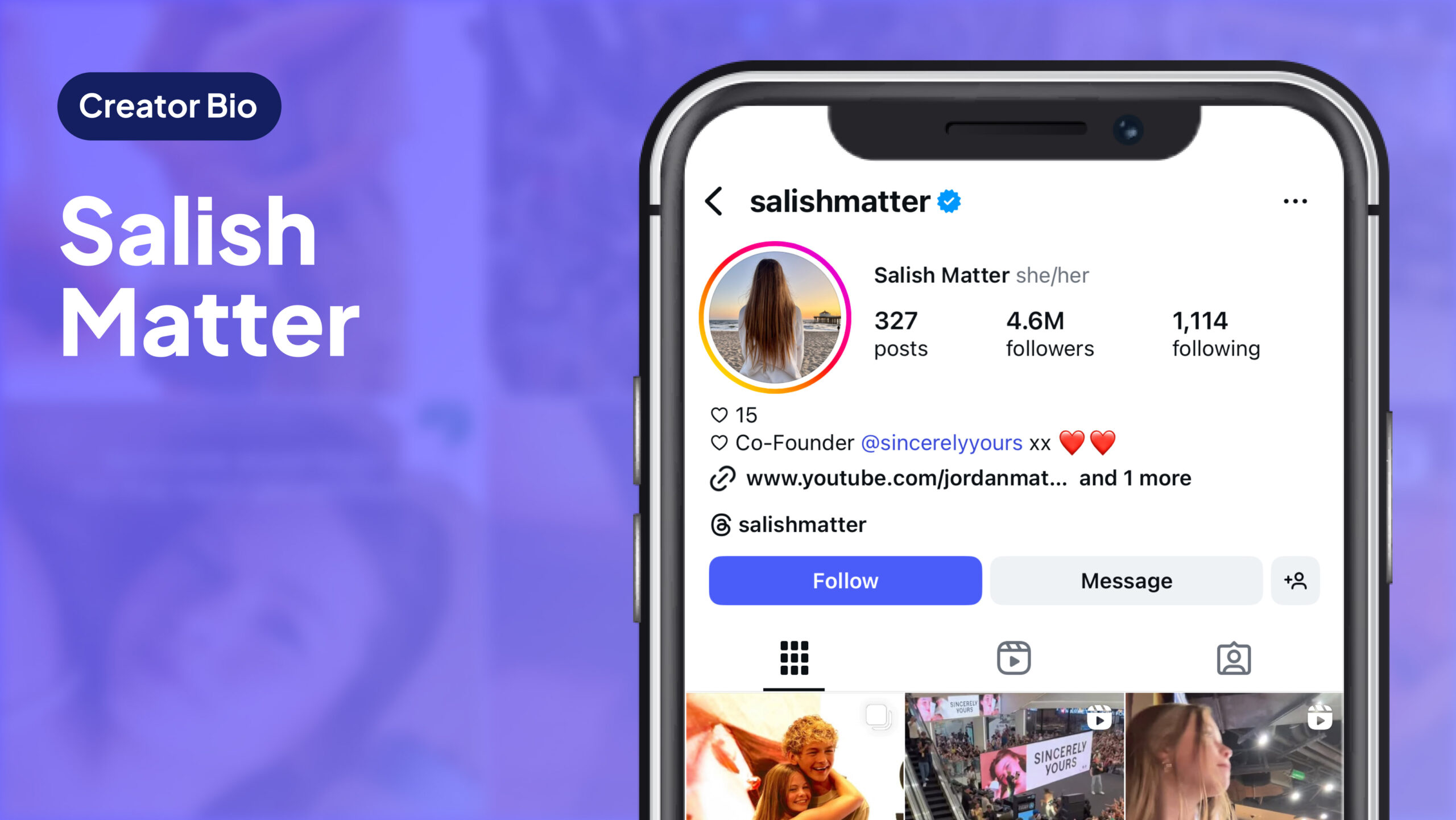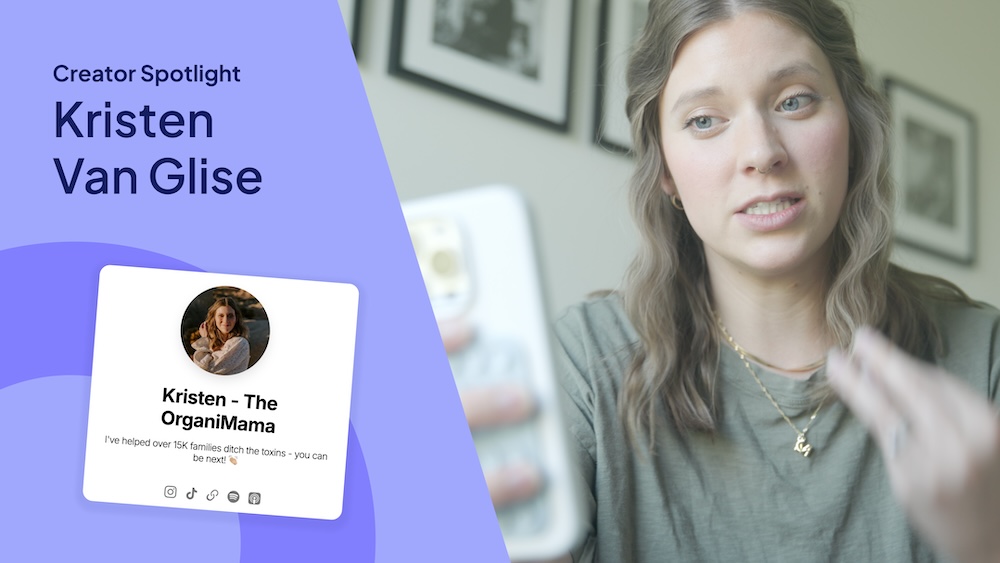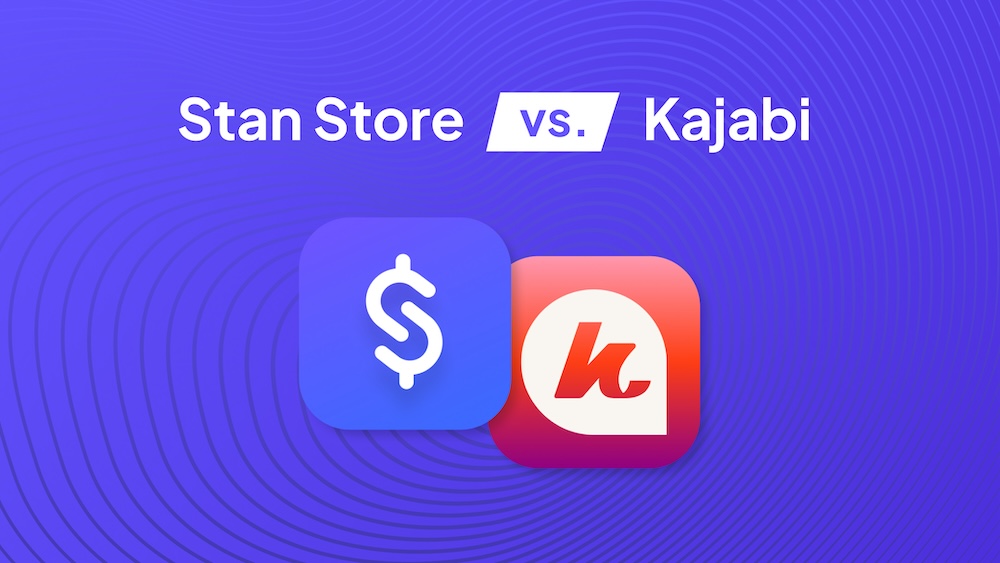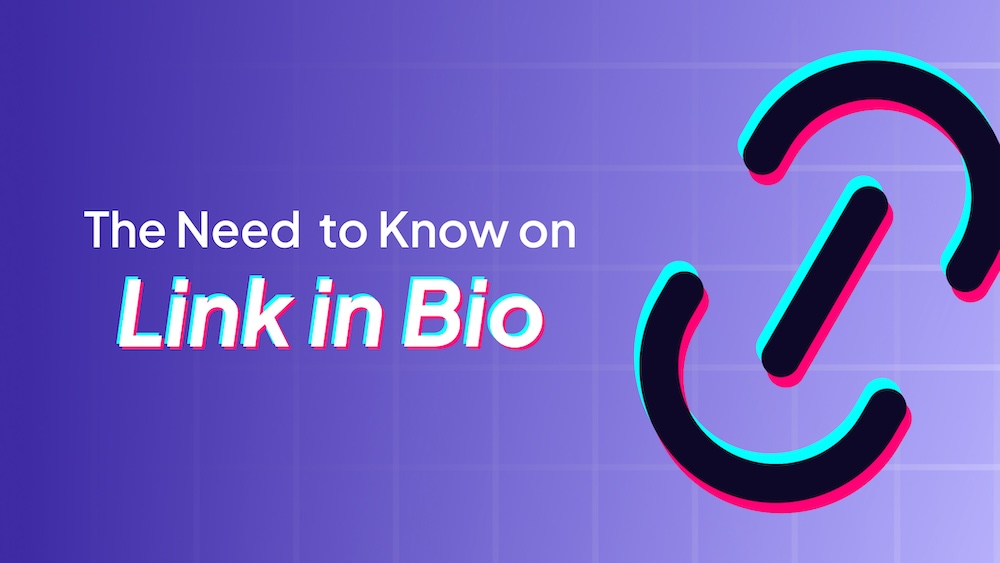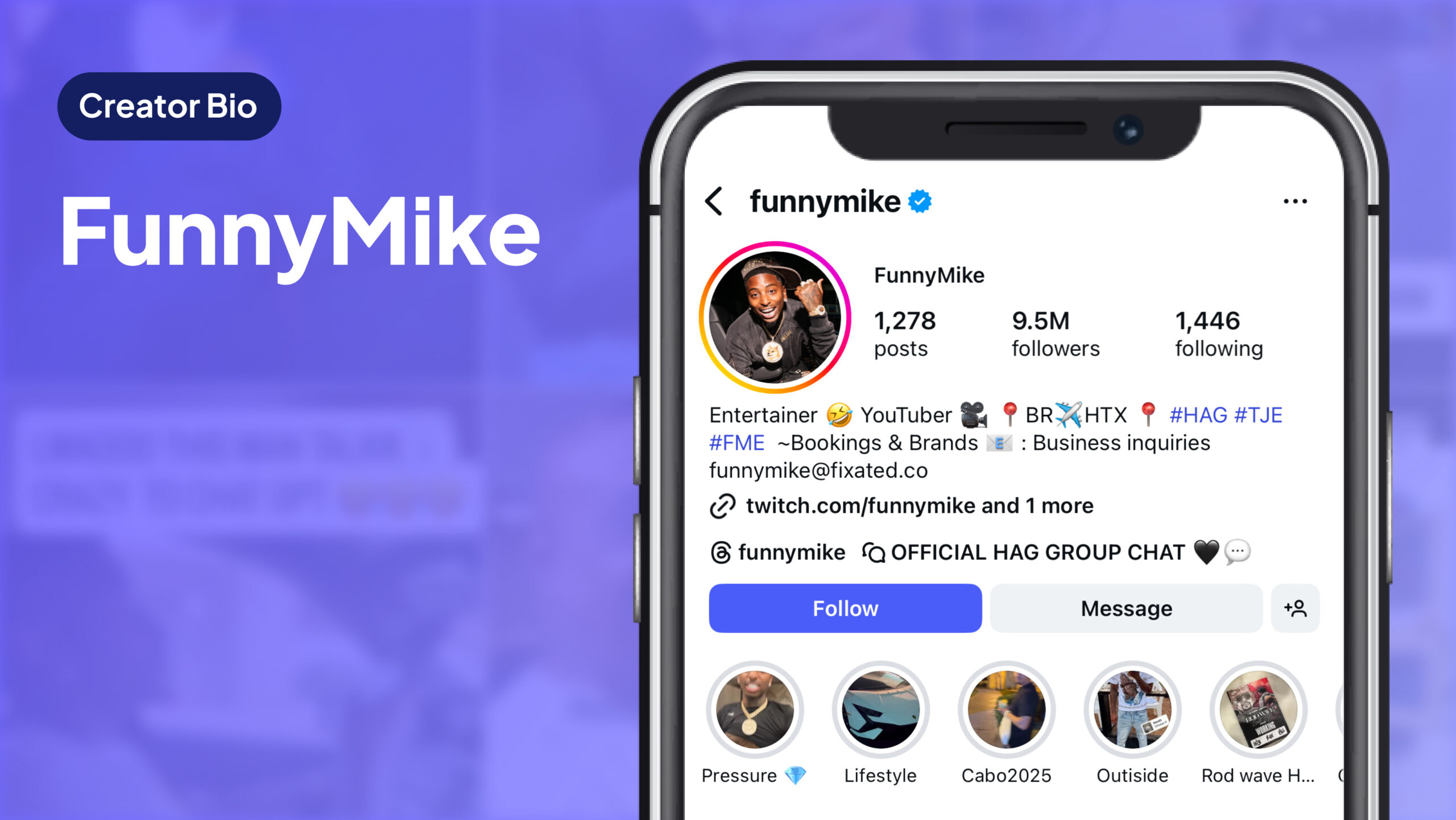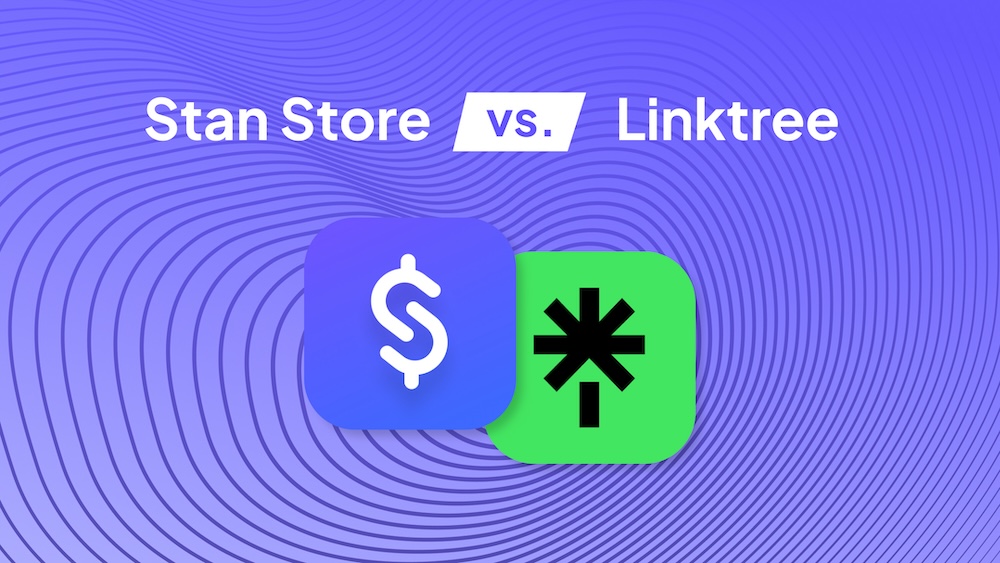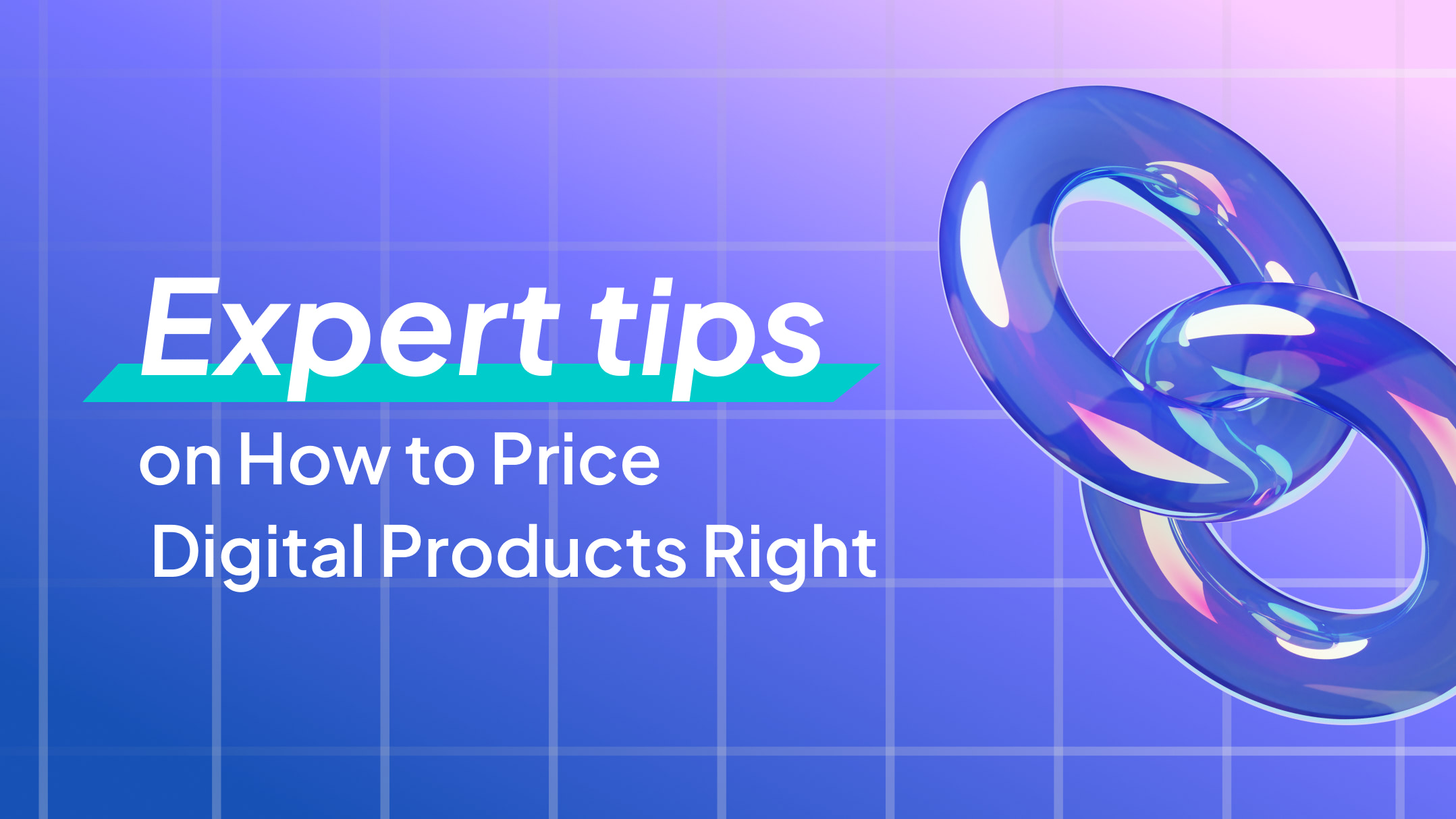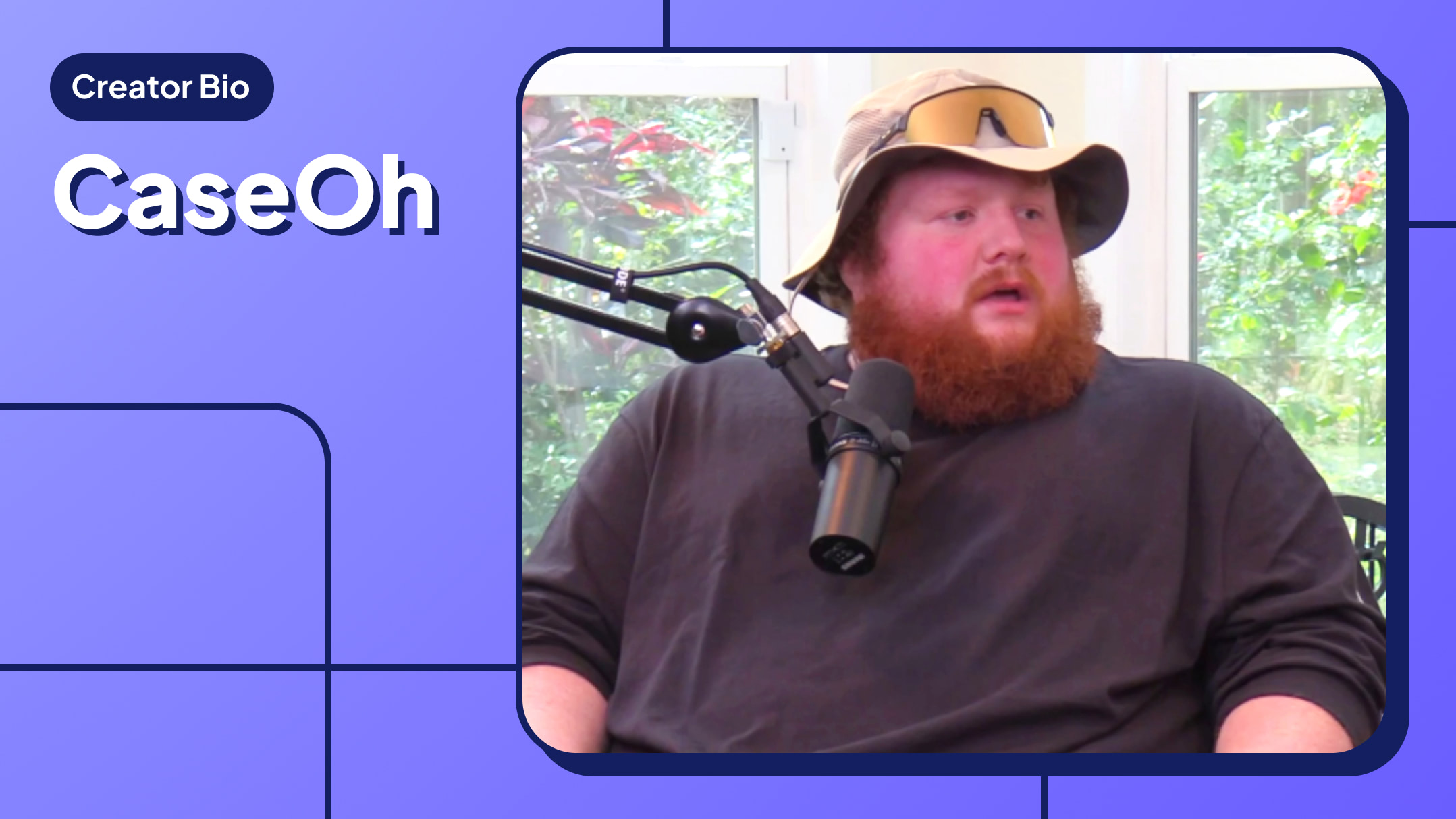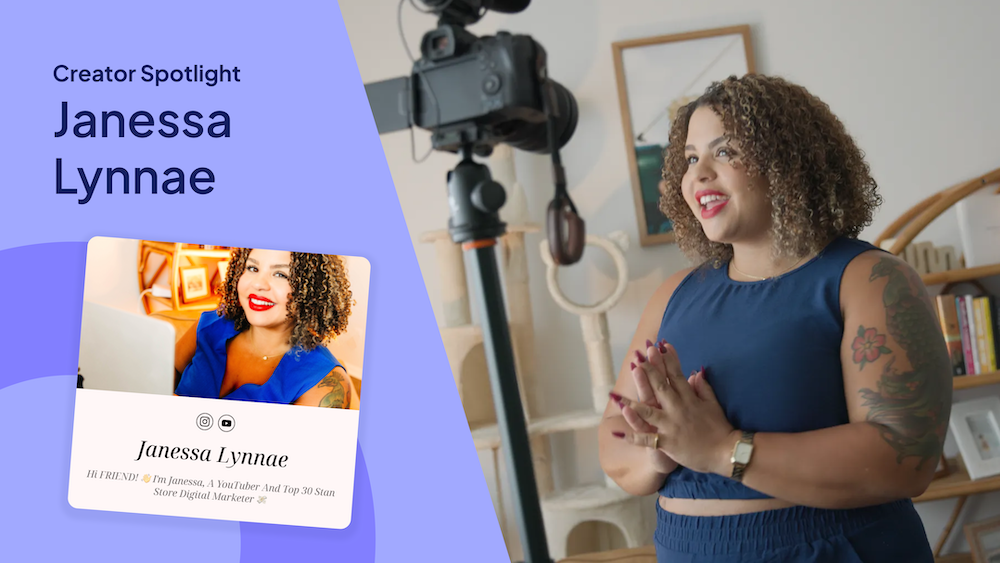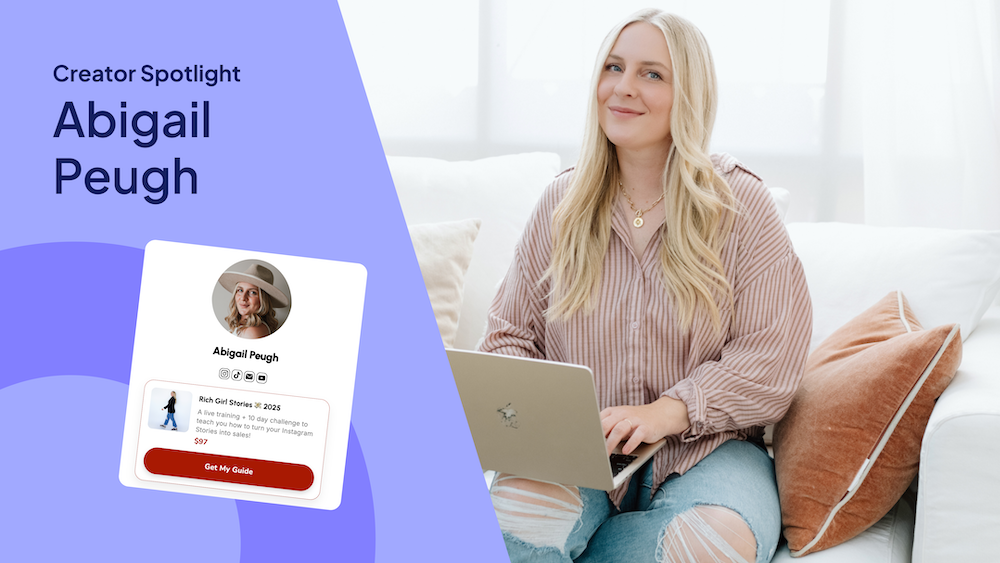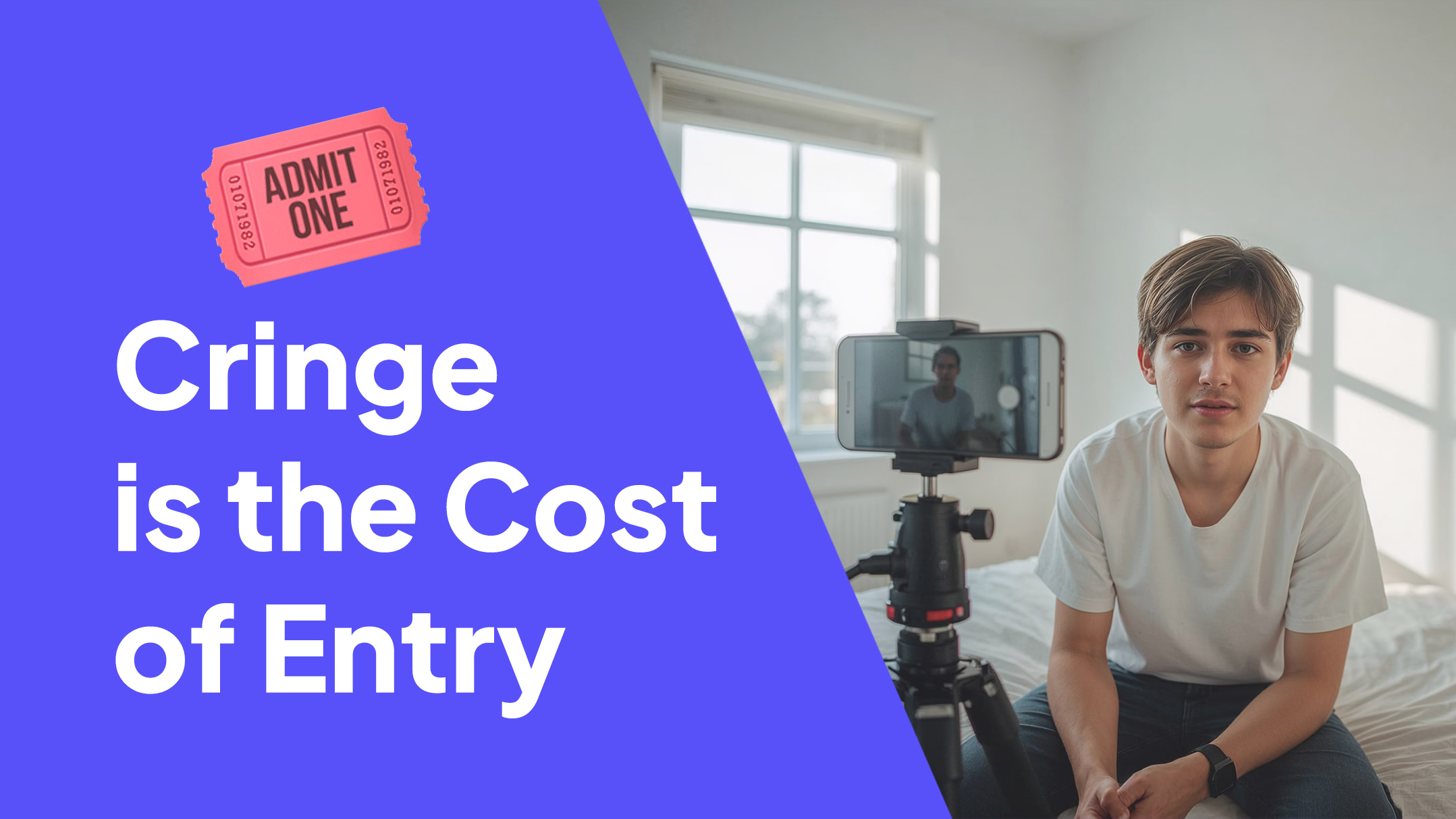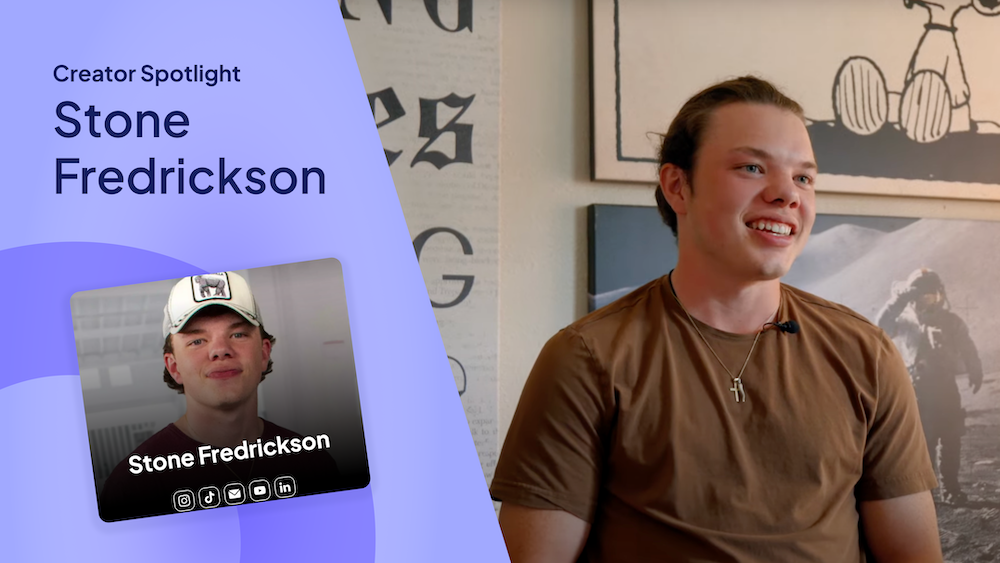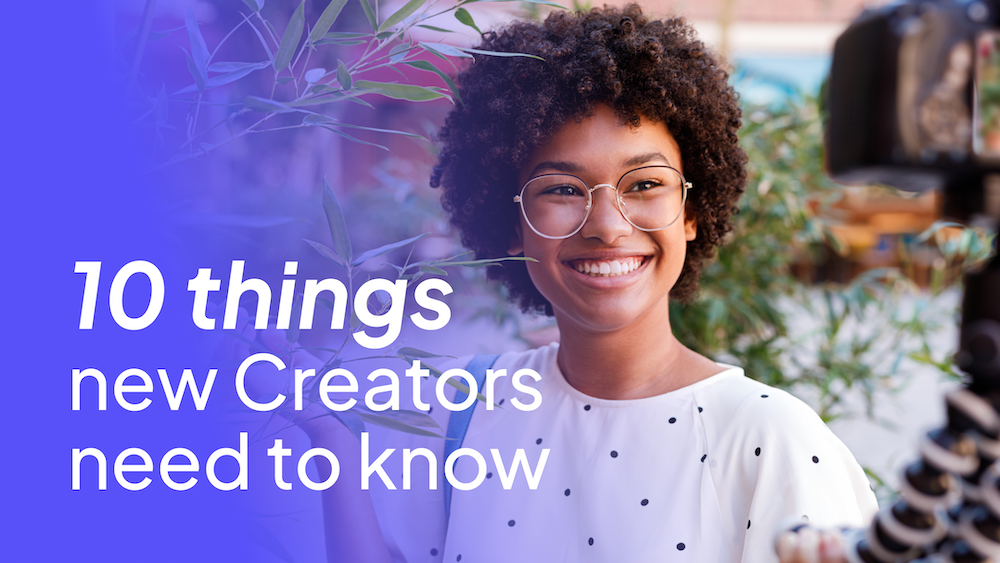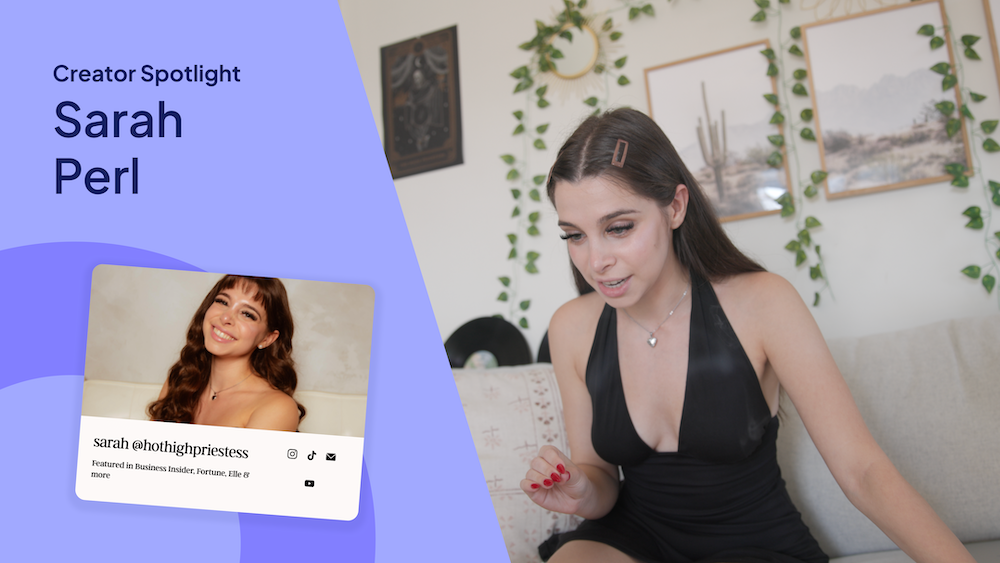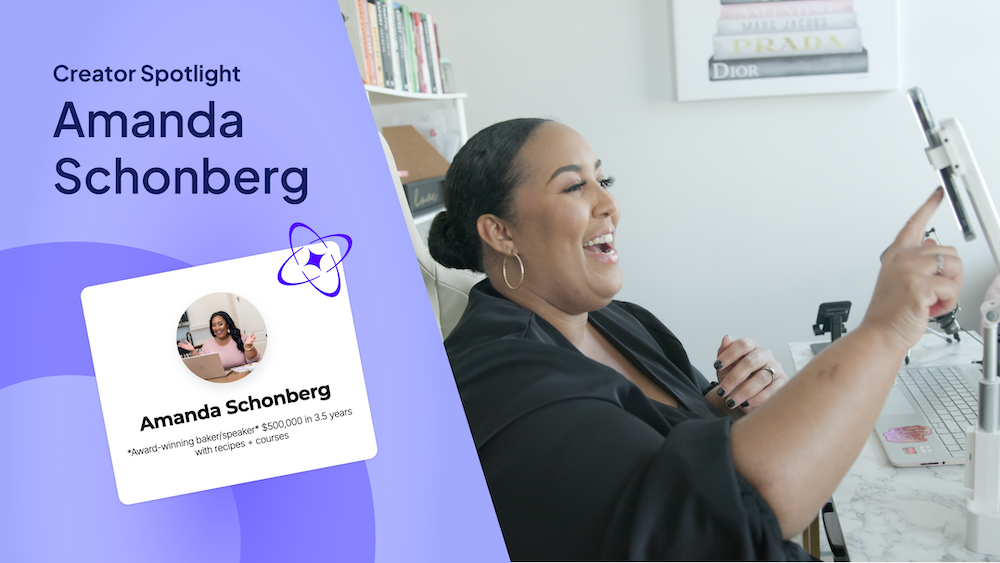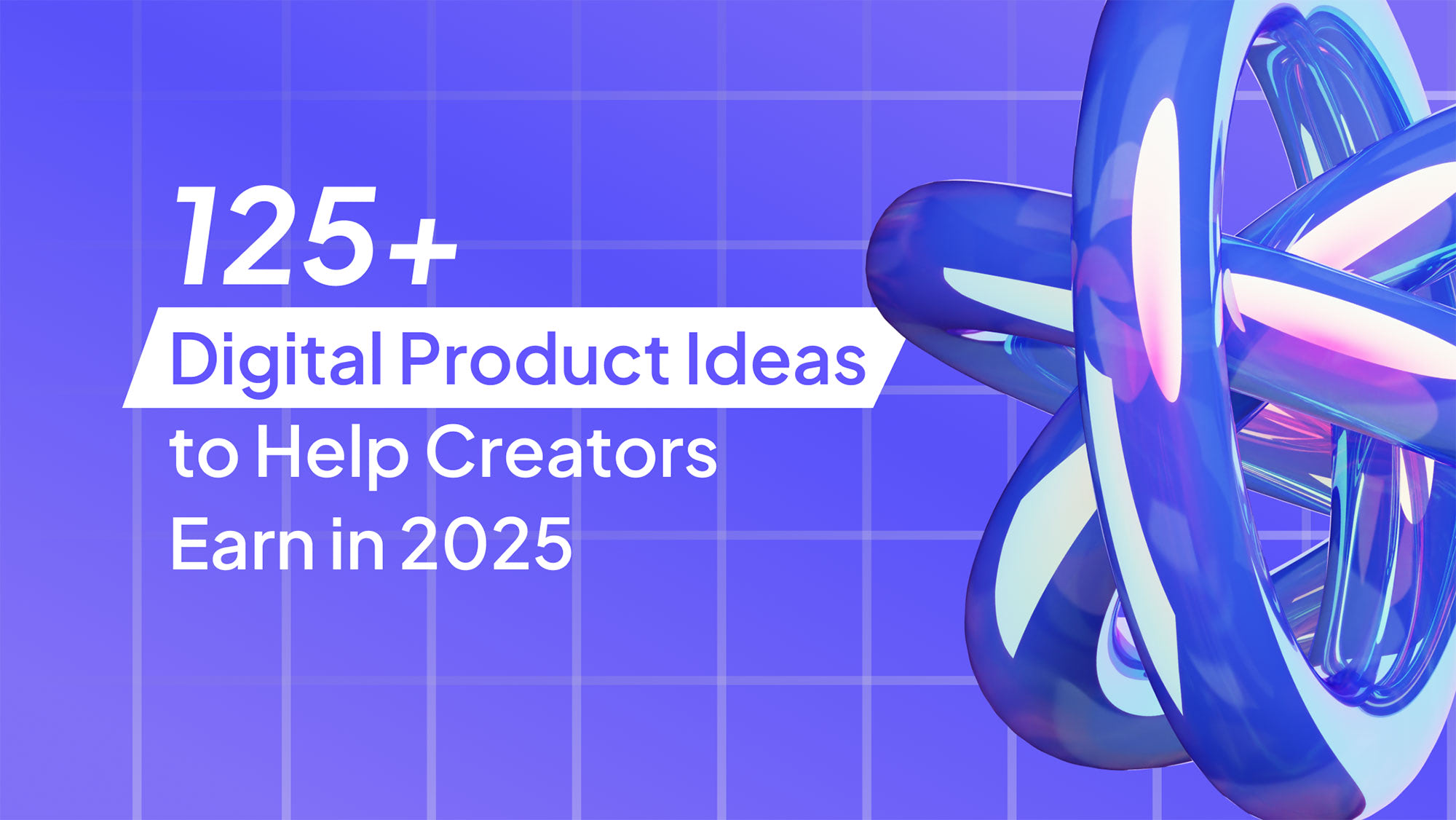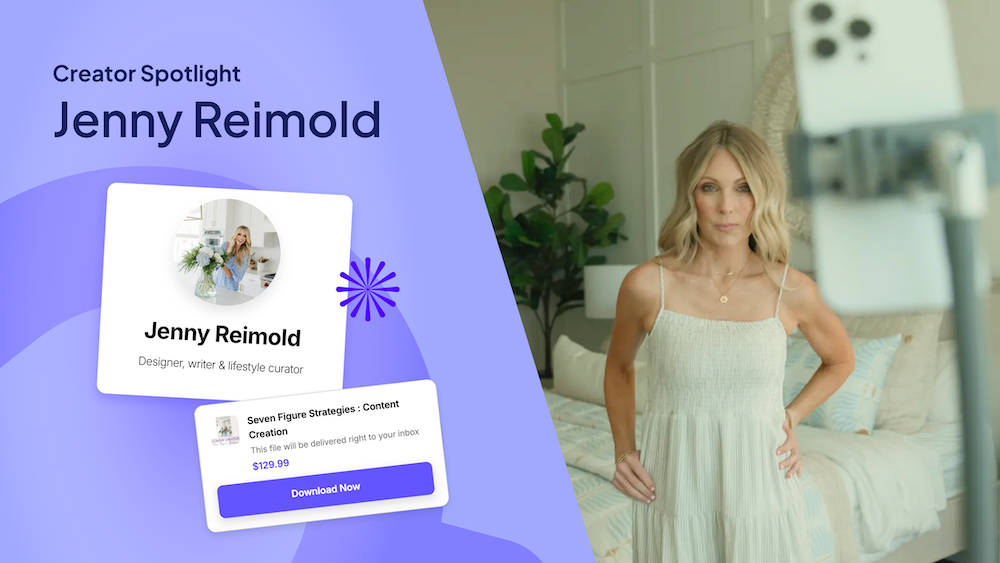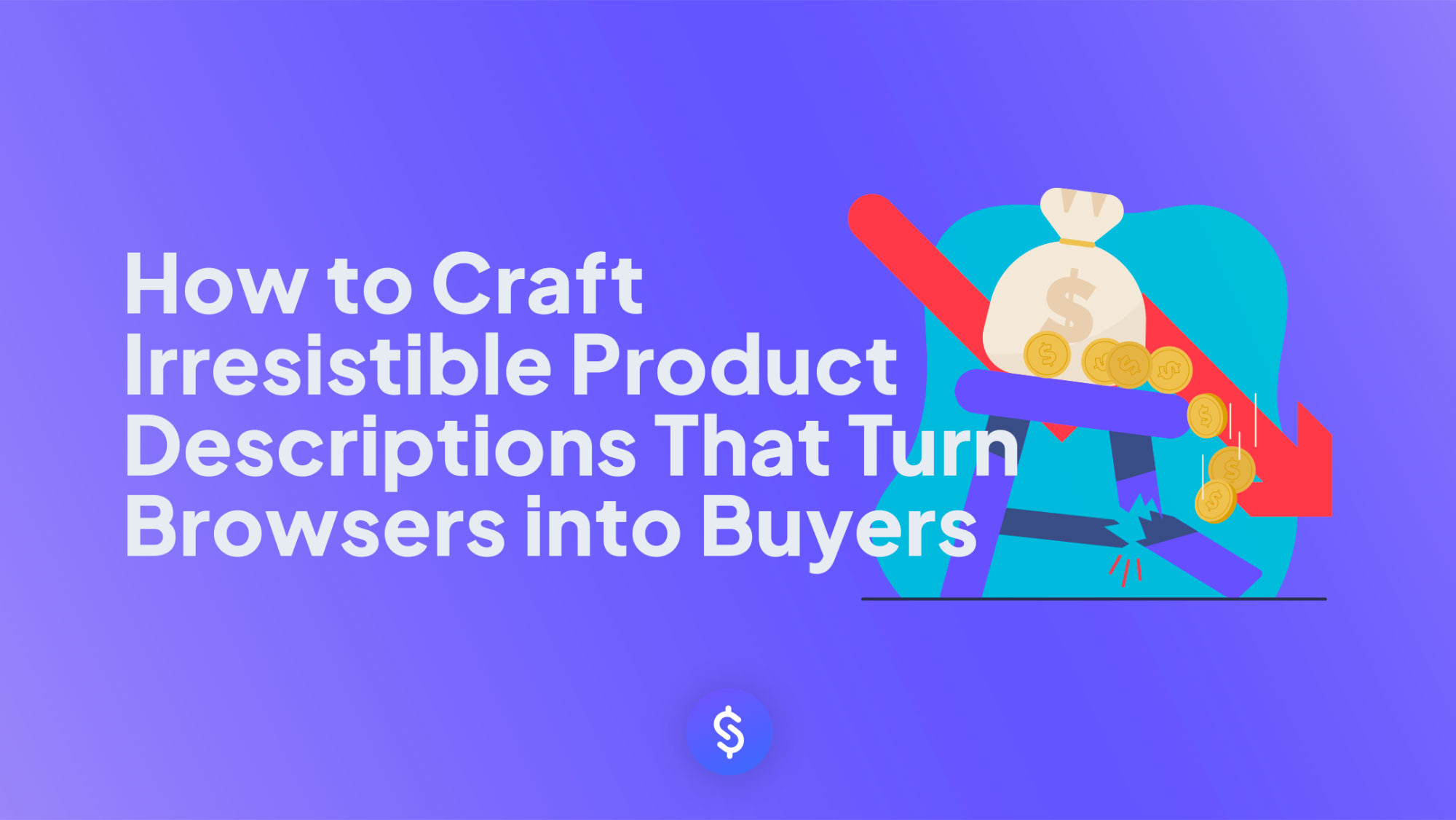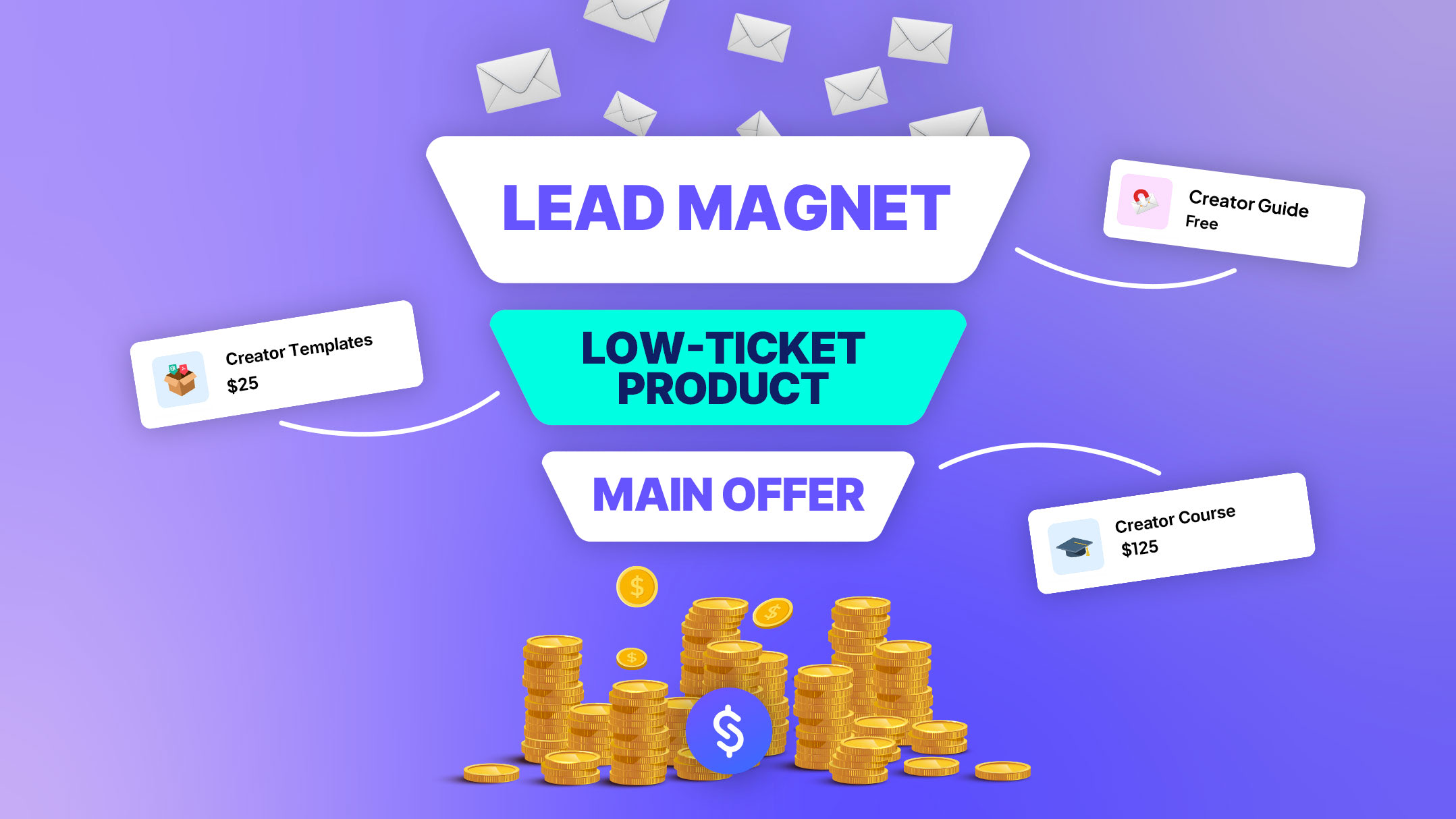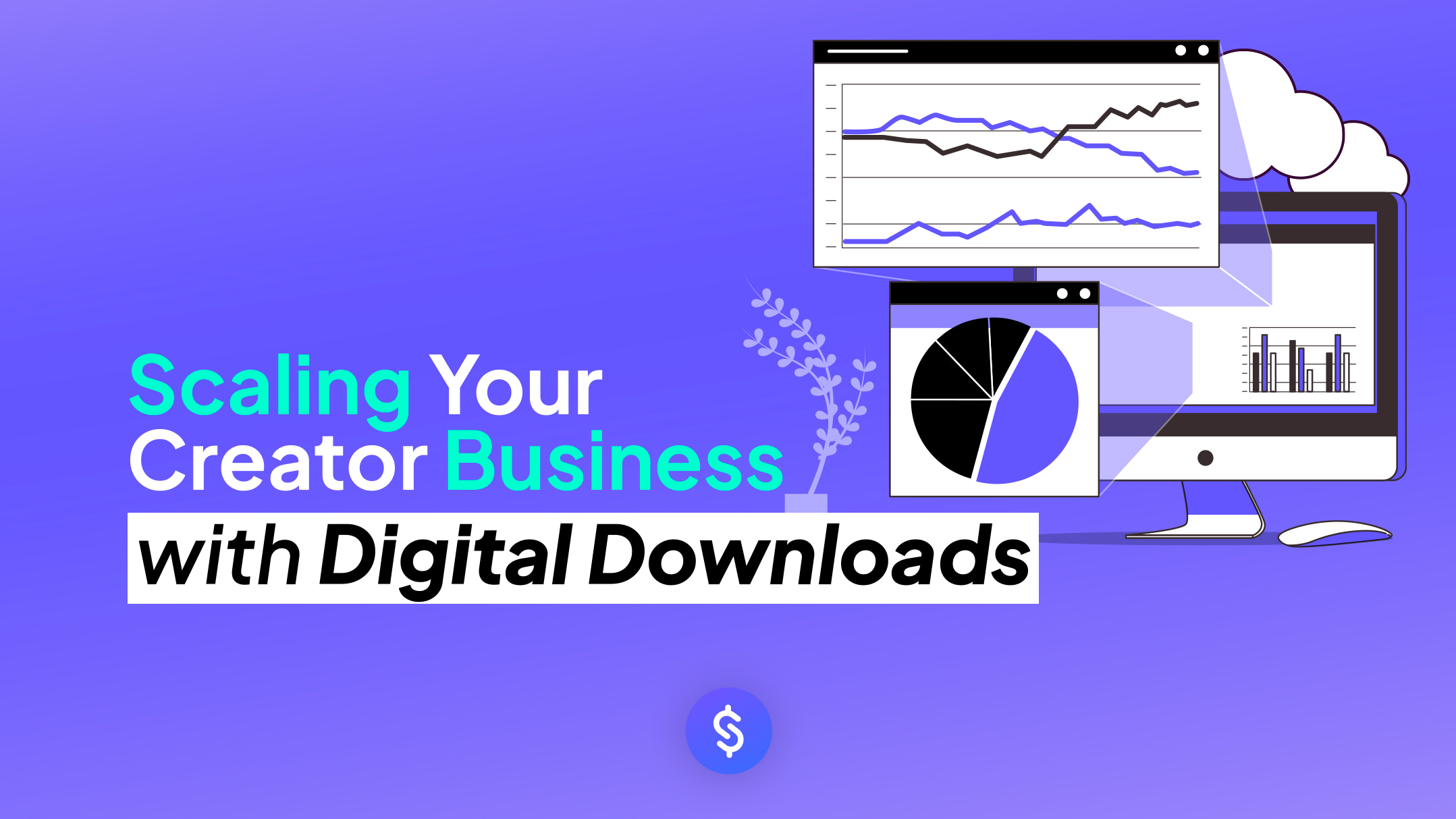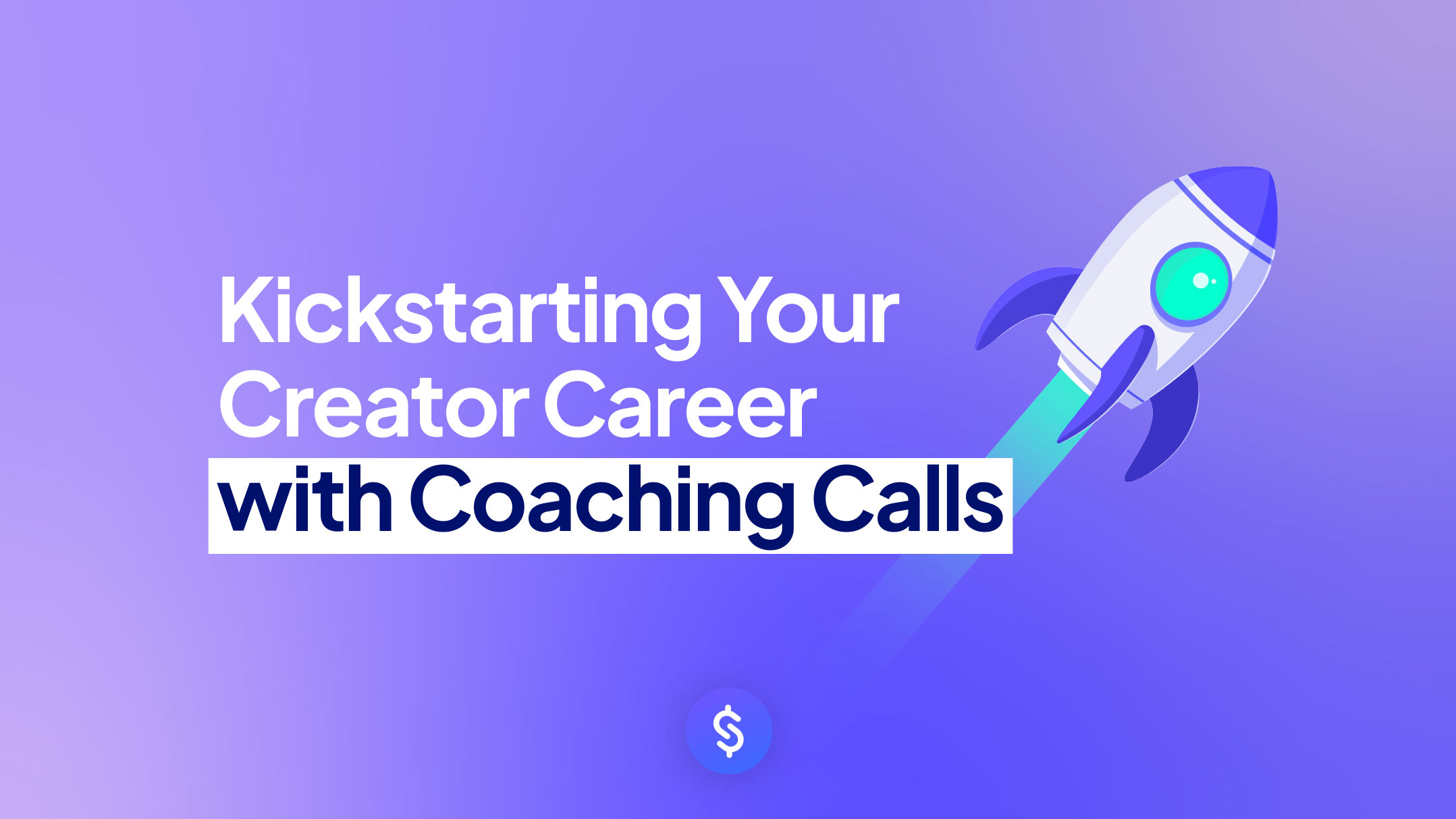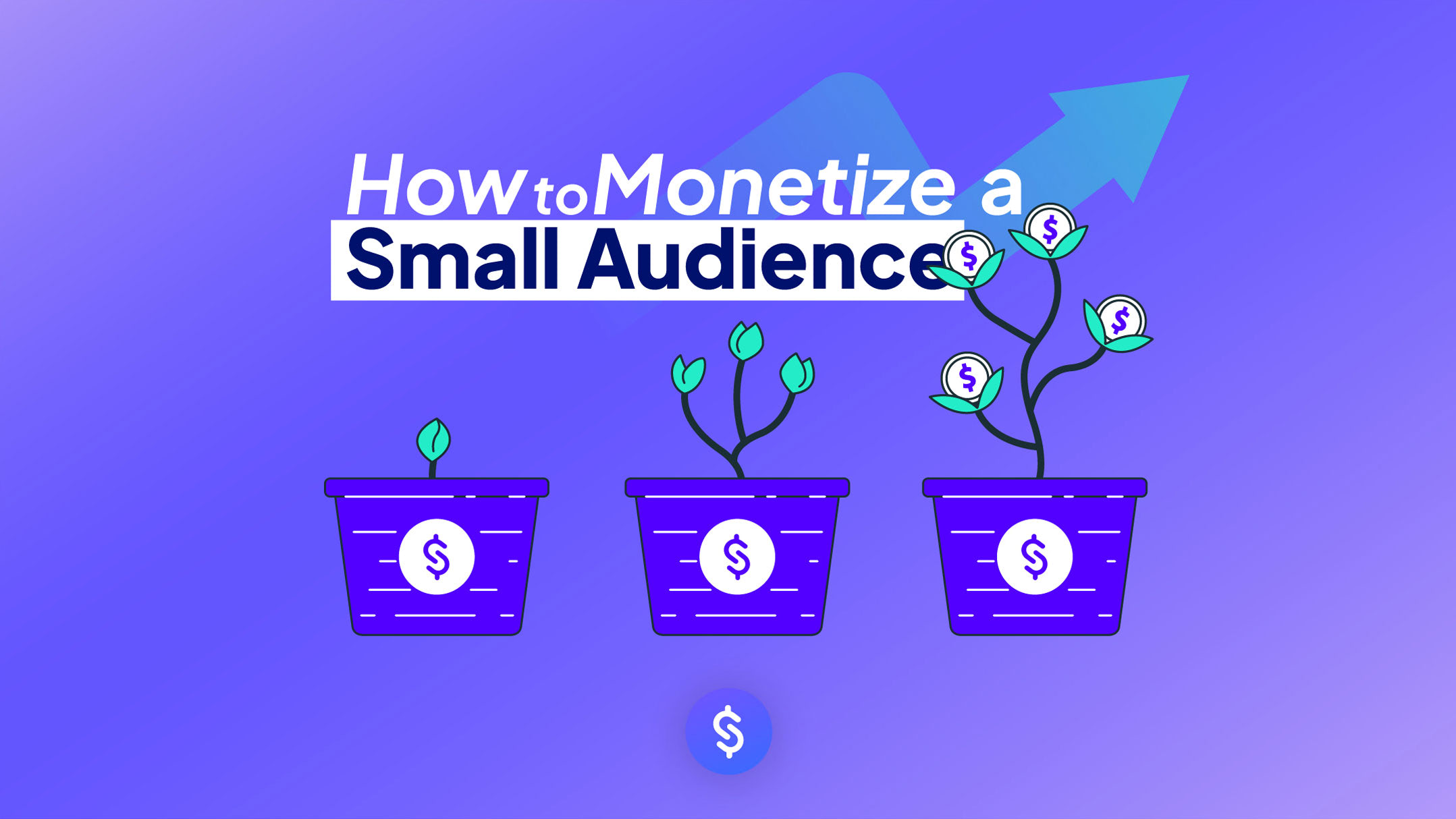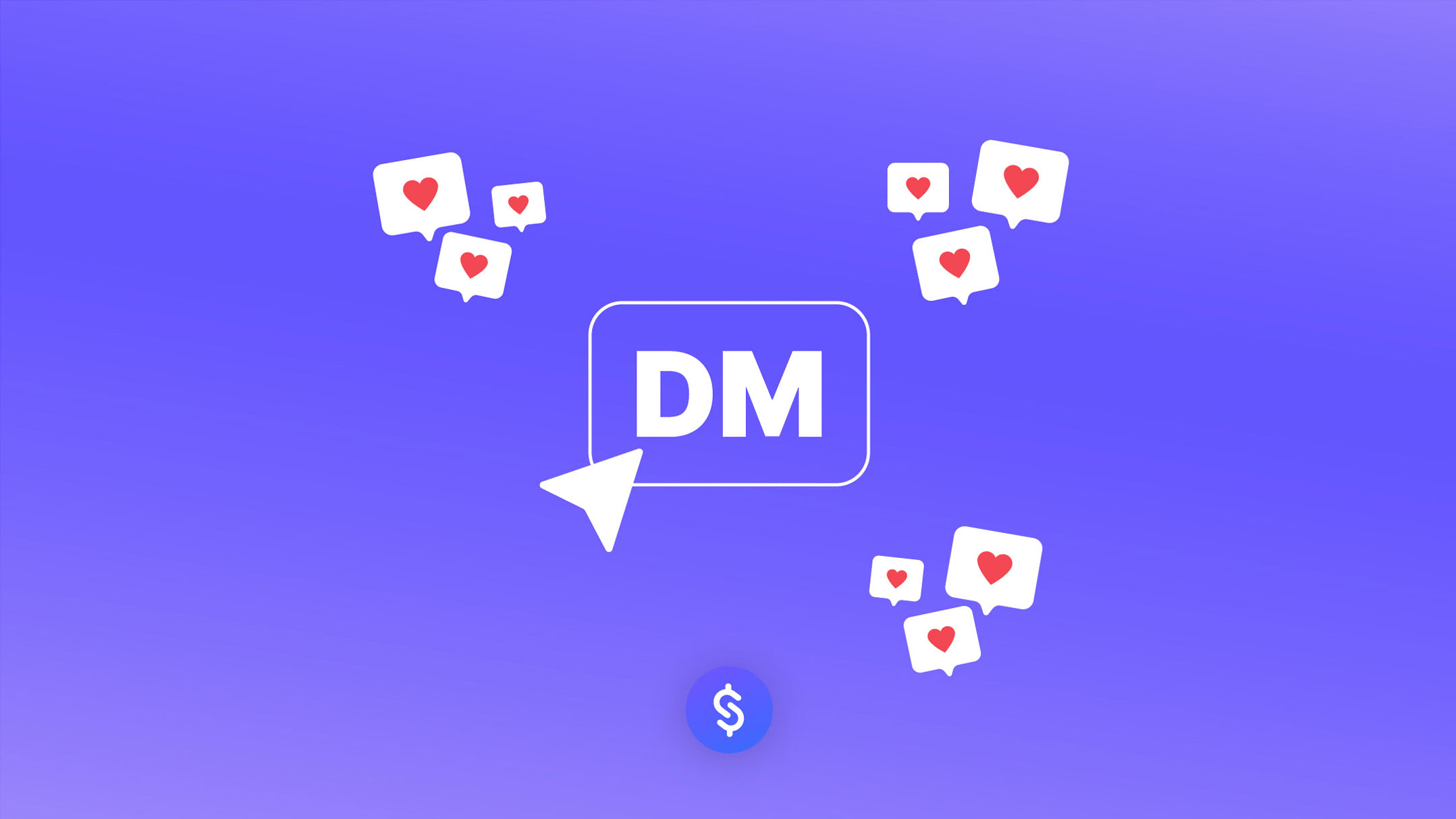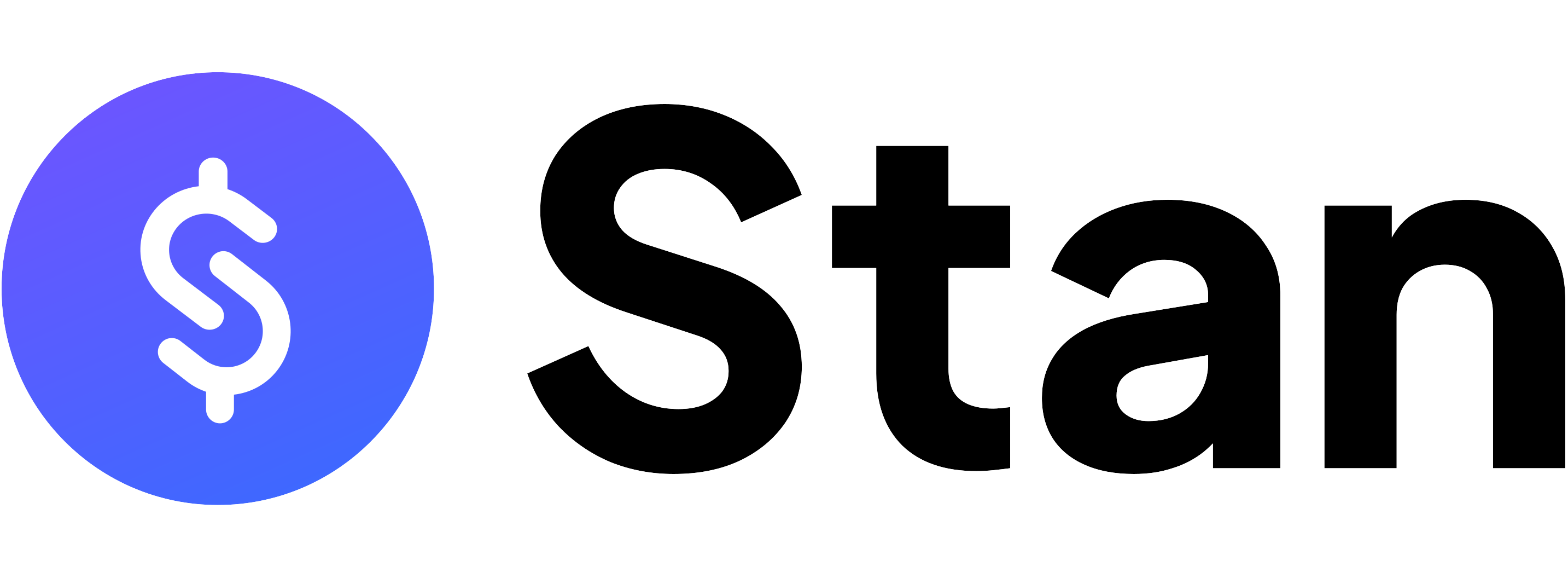TL;DR: A lead magnet is a free, high-value resource offered in exchange for an email address, giving creators an owned channel that survives algorithm changes and reliably turns followers into subscribers and customers. The core benefit is predictable growth: lead magnets build trust, lower acquisition costs, and warm up buyers for courses, coaching, or digital products. Learn the types of lead magnets (educational, templates/tools, interactive, exclusive), the psychology behind why they convert, and the anatomy of a high-converting offer. Get a step-by-step creation workflow, recommended tools, real examples from Stan creators, promotion tactics, and common mistakes to avoid.
Followers don’t guarantee growth. With one algorithm change, the audience you worked so hard to build can vanish overnight.
That’s why your email list matters. It’s the one channel you truly own—a direct line to the people who care most about your work. With it, you can sell, book clients, and keep growing no matter what happens on social media.
Lead magnets are one of the best ways to build that list. They turn casual followers into loyal subscribers and give your audience a reason to stick around. Used right, they’re one of the most reliable growth tools a creator has.
This guide will show you how to create your first lead magnet step by step. You’ll learn what makes one work, how to design it for your audience, and the best ways to promote it.
Let’s dive in.
Table of Contents
- What Is a Lead Magnet?
- Types of Lead Magnets
- Why Lead Magnets Work (The Psychology Behind Them)
- The Anatomy of a High-Converting Lead Magnet
- How to Create Your First Lead Magnet
- Best Tools to Design and Build Lead Magnets
- Lead Magnet Examples from Stan Creators
- How to Promote Your Lead Magnet
- Lead Magnet Mistakes to Avoid
What Is a Lead Magnet?
A lead magnet is a free resource you offer in exchange for someone’s contact information, usually an email address.
Chances are you’ve already signed up for one without even realizing it.
You might have downloaded a free recipe book after filling out a form on a food blog, grabbed a fitness plan promising “7 days to stronger abs,” or entered your email to unlock a discount code while shopping online.
That’s a lead magnet in action. Creators use them to grow their audience, build community, and nurture future customers.
For example, Kristen Van Glise shares her expertise through a free resource on her Stan store. Her guide, The Healing Blueprint, serves as a lead magnet to attract new subscribers and grow her community.
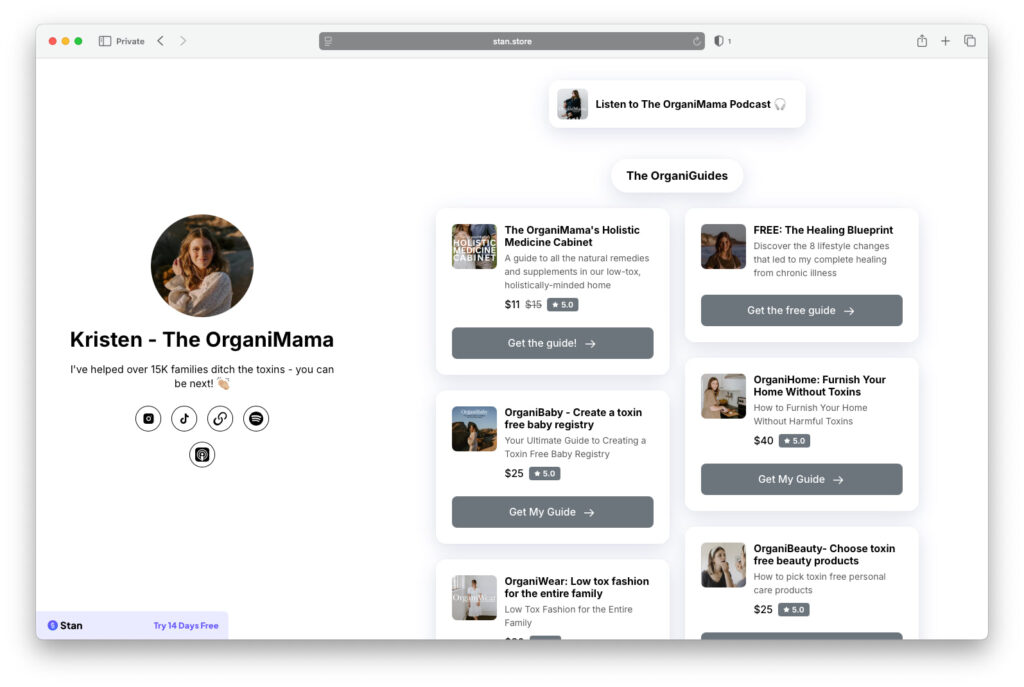
Instead of asking strangers to buy right away, creators give something valuable upfront. In return, they earn permission to stay in touch.
Creators and businesses use lead magnets because they:
- Build trust with new audiences
- Grow email lists faster than content alone
- Reduce customer acquisition costs, especially when running ads
- Warm up leads for future offers
Effective lead magnets are typically tied to the offer that will be presented later. When the paid product is a course, coaching program, or digital download, the lead magnet often serves as a small sample of that same value.
A well-designed lead magnet can also set the stage for a low-ticket product offer that turns new subscribers into first-time customers.
Types of Lead Magnets
When beginners think of lead magnets, they usually picture ebooks, but that’s only one option. Lead magnets come in many forms, and the best choice depends on what your audience needs most.
This section breaks down the main types, provides simple examples, and shows how creators can realistically use them in their own niches.
1. Educational Lead Magnets
What they are
Resources that teach your audience something they want to learn quickly. They work because people are always searching for shortcuts and step-by-step guidance.
Examples
- Step-by-step guides
- Free ebooks
- Webinars or video workshops
- Cheat sheets or how-to PDFs
What this looks like in practice
A productivity creator like Ali Abdaal could offer a “Beginner’s Guide to Effective Note-Taking” as a downloadable PDF.
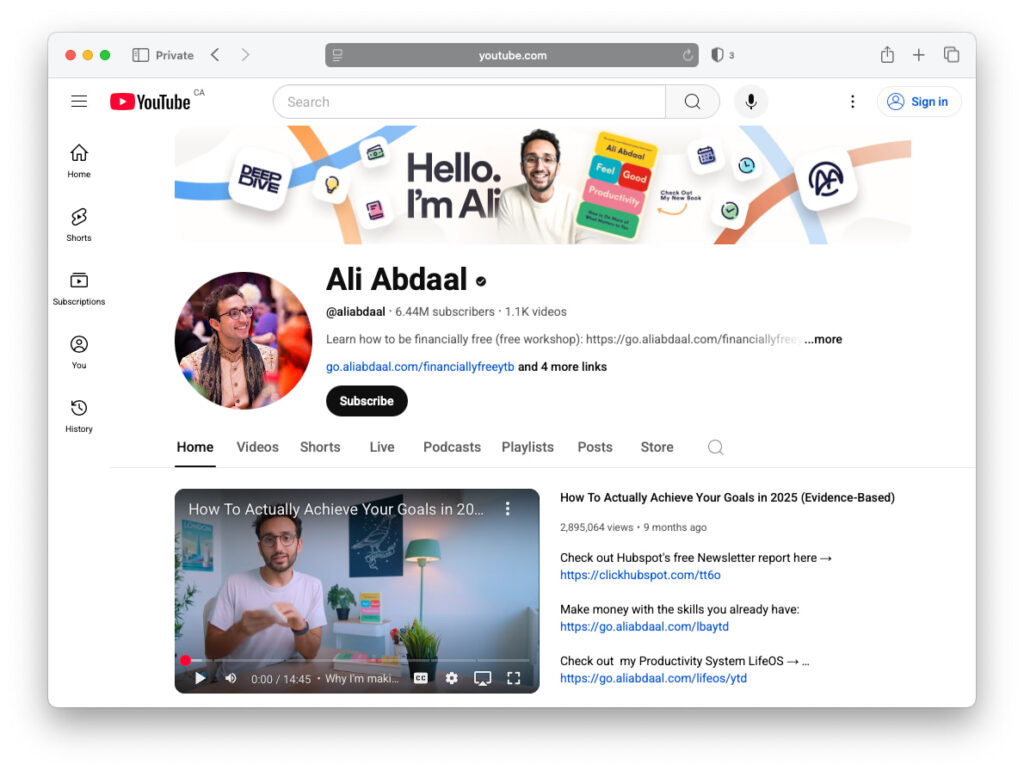
It would give his audience a simple, structured resource they can start using right away. It also positions his paid productivity courses as the natural next step.
2. Tools & Templates
What they are
Plug-and-play resources your audience can use right away without starting from scratch. They’re powerful because they save time and remove the guesswork.
Examples
- Spreadsheets (budget trackers/meal planners)
- Swipe files (email subject lines/caption banks)
- Design templates (social media posts/presentations)
- Calculators (ROI calculators/calorie trackers)
What this looks like in practice
A finance creator like Graham Stephan could offer a “Monthly Budget Spreadsheet” as a lead magnet.
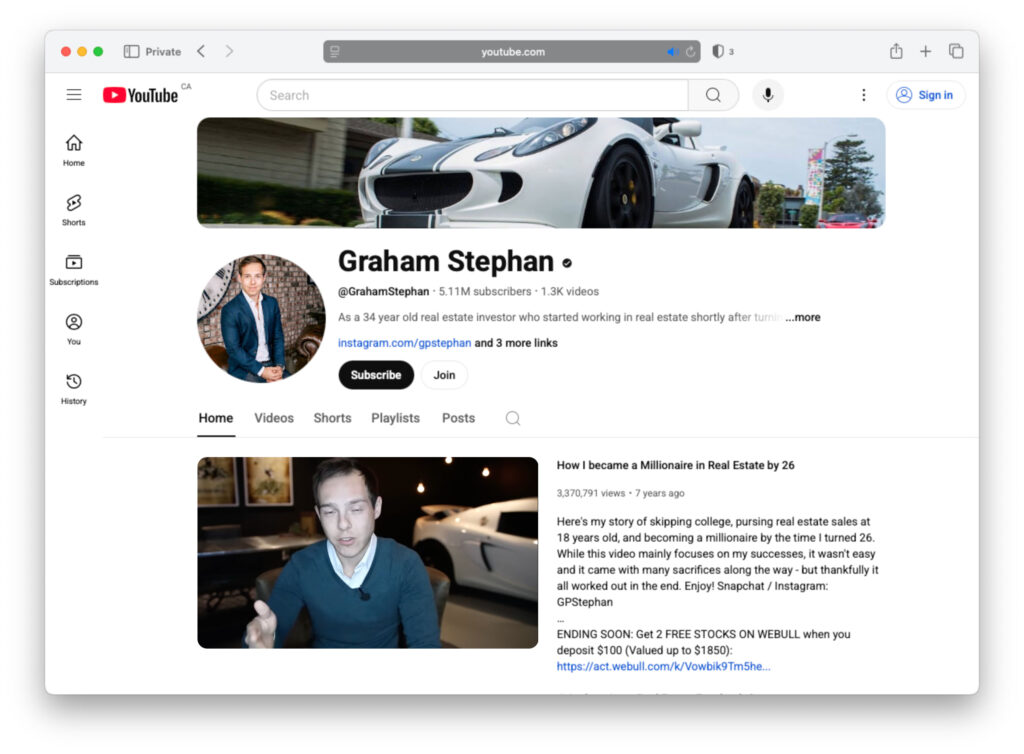
His audience is already looking for simple ways to manage money, and a ready-to-use template delivers an immediate win. It also sets up his broader financial education products as the logical next step.
3. Interactive Lead Magnets
What they are
Resources that invite the audience to actively participate. They stand out because people love personalized results and the sense that the content is “made just for them.”
Examples
- Quizzes (e.g., “What’s Your Productivity Style?”)
- Self-assessments (e.g., fitness or skills scorecards)
- Free trials of apps or software
- Interactive calculators (mortgage, ROI, or calorie needs)
What this looks like in practice
A wellness creator like Matt D’Avella could use a “Minimalism Quiz” that helps people discover their clutter profile.
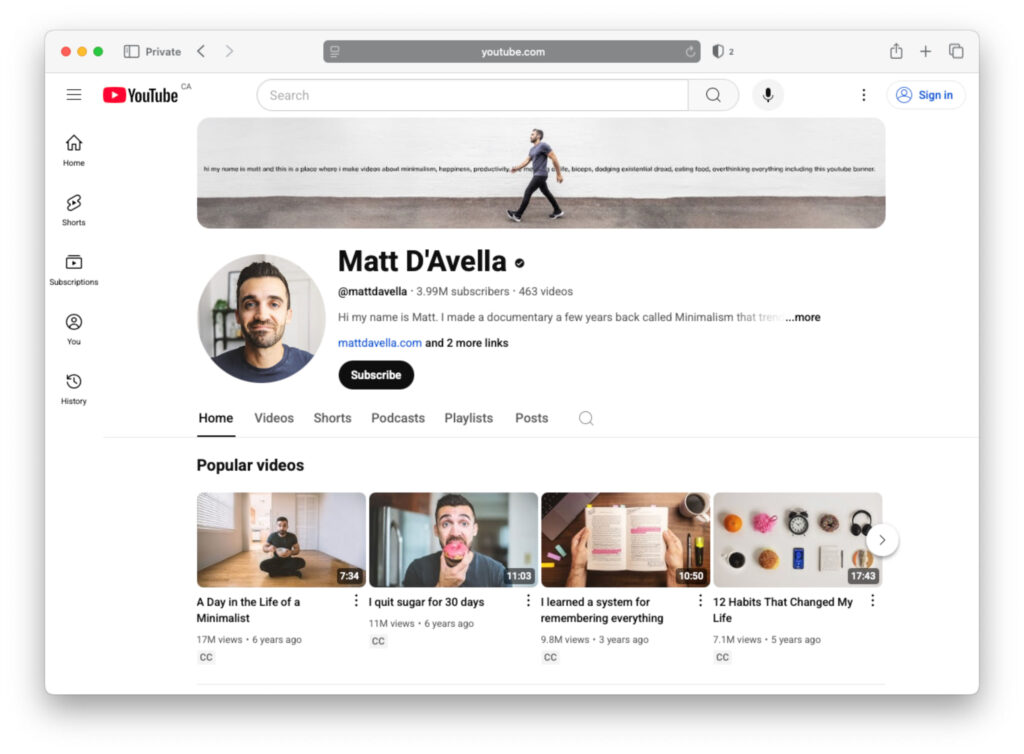
The quiz gives instant feedback, sparks curiosity, and naturally points toward his content and paid programs on simplifying life.
4. Exclusive Access Lead Magnets
What they are
These lead magnets make people feel like insiders by giving them access to something not available to the general public. They work because exclusivity creates a sense of privilege and urgency.
Examples
- Discount codes or early-bird offers
- Private communities or groups
- Free trials with bonus features
- Behind-the-scenes content
What this looks like in practice
A YouTuber like MKBHD (Marques Brownlee) could offer exclusive behind-the-scenes content where subscribers get a closer look at his studio setup or early access to gear reviews.
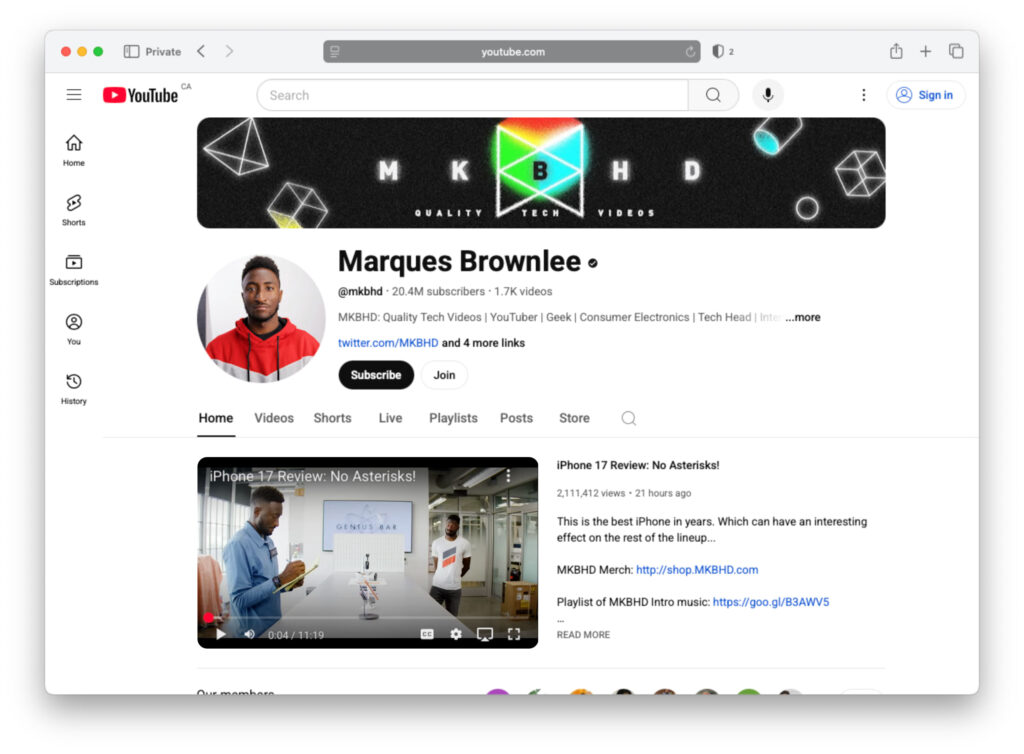
His audience, already passionate about tech, would sign up to feel part of his inner circle, while it subtly connects to his broader brand partnerships and merch.
Why Lead Magnets Work (The Psychology Behind Them)
At first glance, lead magnets might seem almost too simple. Give something away for free and people sign up? Really? But there’s solid psychology behind why they work so well. Here are four key reasons:
1. The Reciprocity Principle
When someone gets something valuable for free, they naturally feel a pull to give something back. In this case, it’s their email address and later, their attention when you follow up.
Think about the last time you downloaded a free resource that genuinely helped you. That experience likely made the brand feel more credible and more worth your time.
2. Quick Wins Feel Irresistible
The most effective lead magnets give people a shortcut. A single-page checklist that saves hours is far more appealing than a 100-page ebook that feels like homework. Beginners, especially, are drawn to resources that solve a small but nagging problem right away.
3. Perceived Value Beats Actual Cost
A PDF that costs you nothing to create can feel priceless to someone who needs it at the right moment. People aren’t measuring what it cost you, but how much it helps them. That’s why even simple tools like templates or swipe files can convert like crazy.
4. Urgency and Exclusivity
Humans hate missing out. A lead magnet framed as “limited-time” or “for the first 500 people only” makes signups skyrocket because scarcity boosts perceived value. Even if it’s digital and infinitely available, urgency gets people off the fence.
The Anatomy of a High-Converting Lead Magnet
Not every freebie moves the needle. Some collect dust in inboxes, while others spark thousands of signups and loyal fans. The difference comes down to a few key traits that make a lead magnet irresistible.
Here’s what every high-converting lead magnet has in common:
1. Solves One Specific Problem
The best lead magnets focus on a single, pressing issue your audience cares about. For example:
- A checklist to set up a YouTube channel in 30 minutes
- A spreadsheet to track daily expenses
- A 7-day meal plan for beginners
The more focused your lead magnet, the easier it is for someone to say “yes.”
2. Quick to Consume
People don’t want homework. They want a quick win. These formats make it easy to deliver value in minutes, not hours:
- A one-page PDF instead of a 100-page ebook
- A short quiz instead of a two-hour workshop
- A template they can copy in one click
The easier it is to use, the higher your conversion rate.
3. Delivers an Immediate Win
A good lead magnet goes beyond providing knowledge and delivers results right away. Consider these examples:
- A photographer sharing a “Top 5 Lightroom Presets” pack so the audience sees their photos improve instantly
- A fitness creator offering a “10-Minute Morning Stretch Routine” so the audience feels better on day one
- A social media strategist giving a “30-Day Content Calendar” that fills an immediate planning gap
That instant transformation builds trust and momentum.
4. Relevant to Your Paid Offer
Downloads mean little if they don’t lead to your product or service. A well-aligned lead magnet acts as a stepping stone, like:
- A free “Daily Planner Template” that points to a productivity course
- A “Business Idea Validation Checklist” that connects directly to an entrepreneurship program
- A “Sample Coaching Session” that naturally leads into a full coaching package
These kinds of lead magnets guide subscribers naturally toward your paid solution.
5. Easy to Share
The best lead magnets spread beyond the first download. Formats that encourage sharing include:
- Templates people can pass along to friends
- Quizzes that prompt users to share their results
- Challenges that spark community participation
When your audience feels excited to share, your lead magnet becomes its own marketing engine.
How to Create Your First Lead Magnet
You’ve just seen what makes a great lead magnet. Now it’s time to put that knowledge into practice and create one yourself.
The process doesn’t have to be overwhelming. With these seven simple steps, you can move from idea to launch without getting stuck in endless planning.
1. Define Your Audience
The first step is deciding who you’re creating your lead magnet for. A lead magnet that tries to appeal to everyone usually ends up connecting with no one.
Think of it this way:
If you’re a productivity creator, “busy professionals” is too broad. But “junior marketers who struggle to focus while working from home” is specific. With that clarity, it’s much easier to design something they’ll immediately want.
Here are a few questions to help you narrow it down:
- Who do I want to attract right now (beginners, intermediates, or advanced learners)?
- What problem do they keep running into that slows them down?
- How does solving this problem tie into the product or service I eventually want to sell?
For example, a fitness creator could target “new moms wanting to rebuild strength safely.” That clarity could lead to a free “5 Gentle Core Exercises” guide, which speaks directly to their need and aligns with a paid coaching program.
2. Identify Their #1 Pain Point or Desire
Once you’ve defined your audience, the next step is to zoom in on the single problem they care most about fixing right now. A lead magnet that attempts to solve five different problems often ends up feeling diluted. The best ones hit one issue head-on.
Think about what keeps your audience up at night or what they complain about most often.
For a travel vlogger, it could be “how to find the cheapest flights without spending hours searching.” For a cooking creator, it might be “wanting healthy meals that don’t take forever to prepare.” For a language tutor, it could be “struggling to remember new vocabulary words.”
Here’s a quick way to test if you’ve found the right pain point:
- Is it urgent? They want it solved today, not “someday.”
- Is it frustrating? They’ve tried other solutions and failed.
- Is it simple to solve with one resource? If it needs a whole book, it’s too big.
For instance, a travel vlogger could turn the flight-search struggle into a “Cheapest Flights Cheat Sheet” with three sites or tools they personally use. It’s small, actionable, and directly tied to the vlogger’s content on making travel easier.
3. Pick the Right Format
After you know your audience and their biggest pain point, the next decision is how to package the solution. The format matters just as much as the content, because the wrong format can make even a great idea flop.
The best approach is to match the format to what your audience naturally consumes and how quickly they want the result:
- If the pain point is complex but needs structure, a guide, mini-course, or workbook works best.
- If the pain point is time-related, go for a quick checklist, cheat sheet, or template.
- If the pain point is practical and repeatable, a swipe file or spreadsheet is perfect.
For example, a photography YouTuber could create a “Preset Pack for Beginners” as a lead magnet. Their audience doesn’t want to read a long manual on photo editing. They want an easy, plug-and-play tool that instantly makes their photos look better. The format matches the need.
4. Outline the Content
With your format chosen, the next step is to map out what goes inside your lead magnet. This doesn’t need to be complicated. In fact, the simpler the outline, the more effective the end result will be.
Start by asking:
What’s the shortest path to solving this problem?
Then structure your lead magnet around that path.
A good outline usually has three parts:
- Introduction or setup: A quick line or two explaining what the resource is and how to use it.
- Core content: The actual steps, tips, or template that delivers the win.
- Next step: A gentle nudge toward what else you offer (without turning it into a sales pitch).
For example, a music producer who teaches beat-making could create a “Beginner’s Drum Kit” as a downloadable file. The outline might look like this:
- Intro: “Here are the drum sounds I use most often in my tutorials.”
- Core: The actual drum kit, with a short guide on how to load it into popular software.
- Next step: A note saying, “Want to learn how to build full beats with these sounds? Check out my beginner tutorials.”
Outlining like this keeps your lead magnet focused, quick to create, and easy for your audience to use immediately.
5. Design and Branding Tips
Even the best idea can fall flat if it looks sloppy. A polished design makes your lead magnet feel valuable, even if it’s free. Luckily, you don’t need to be a designer to make it work.
Keep these basics in mind:
- Clean layout: Use plenty of white space so it doesn’t feel crowded.
- Readable fonts: Stick with simple, easy-to-read typefaces.
- Consistent colors: Match the look to your brand or the style of your content.
- Simple visuals: Add icons, screenshots, or graphics that support the content, not distract from it.
Basic design tools and templates can help you accomplish this quickly, without needing advanced skills.
For example, a cooking creator could put together a “5 Easy Weeknight Recipes” PDF with a simple template, turning it into a professional-looking mini-cookbook in under an hour.
6. Deliver Your Lead Magnet
Creating a lead magnet is only half the job. The other half is making sure your audience receives it smoothly. Nothing kills momentum faster than a clunky download process.
The best delivery feels instant and seamless: someone signs up, and within seconds they have the resource in their inbox or on their screen. That quick gratification reinforces trust and makes them more likely to open your future emails.
There are a few common delivery options:
- Direct download link after signup
- Automated email with the file attached or linked
- Private access page where the resource is hosted
This is where Stan makes things simple for creators. Instead of juggling multiple tools, you can set up a lead magnet directly inside your Stan store.
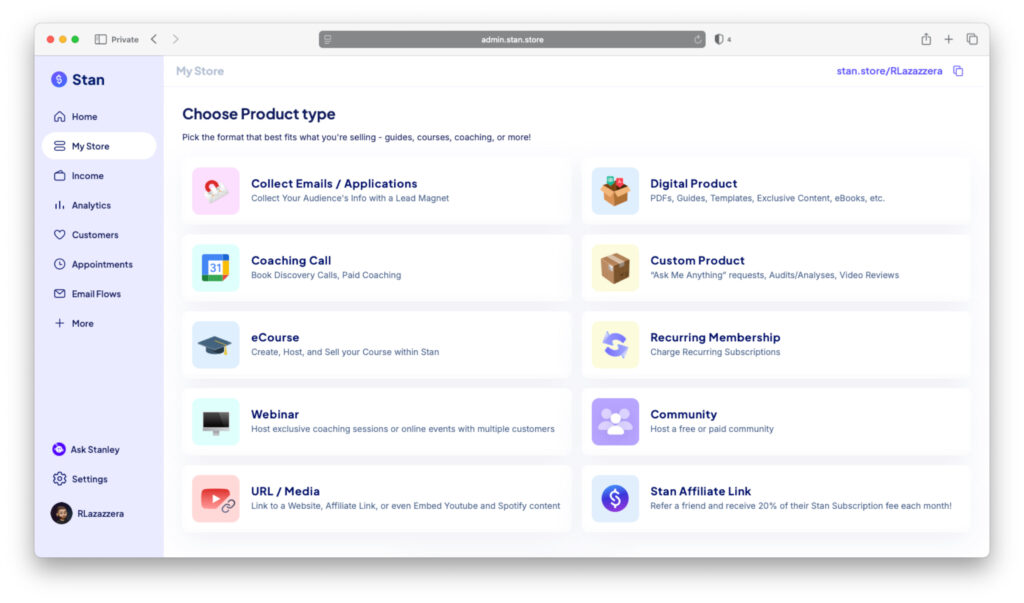
A follower signs up, and Stan automatically handles the delivery, whether it’s a PDF, video, or template. It also tags the subscriber, making it easy to nurture them with future content or offers.
7. Test and Refine
Launching your lead magnet isn’t the finish line. It’s the starting point, and there’s almost always room to make it stronger.
Start by watching the basics:
- Conversion rate: How many people who see the signup form actually opt in?
- Open rate: Are people opening the email that delivers your lead magnet?
- Engagement: Do subscribers click, download, or use what you sent them?
If your numbers are low, small changes like these can make a big difference:
- Use a more specific or urgent title.
- Simplify the design or reduce the steps needed to get the resource.
- Test new formats (a checklist instead of a long guide, a template instead of an ebook).
For example, a fashion creator might notice their “Capsule Wardrobe Guide” gets lots of downloads but few follow-up opens. By trimming it into a “10 Must-Have Pieces Checklist,” they could make the magnet faster to use and easier to share, leading to higher engagement.
Best Tools to Design and Build Lead Magnets
You don’t need to spend big or battle complex software to build a solid lead magnet. The right tools make it easy to design, package, and share resources with your audience.
We’ve rounded up the best options to help you bring your lead magnet ideas to life. Let’s explore them.
1. Design Tools
A polished design makes even the simplest lead magnet feel valuable. The right tools let you create professional-looking guides, checklists, and workbooks without needing design experience.
Recommended tools:
- Canva: Create ebooks, guides, and checklists quickly with drag-and-drop templates. Customize colors and export a clean PDF in minutes.
- Visme: Turn stats or research into sleek charts, infographics, and reports for data-heavy resources.
- Adobe Express: Build quick one-pagers or branded workbooks with more styling control than Canva.
2. Writing and Document Tools
Some of the most effective lead magnets are simple and text-based—like a short guide, an ebook, or a resource list. Writing tools make it easy to draft, format, and export these into shareable files.
Recommended tools:
- Google Docs: Draft, collaborate, and export as a PDF. Perfect for simple guides or resource lists.
- Designrr: Turn blog posts, articles, or other content into polished ebooks or lead magnets with easy drag-and-drop design features.
- Microsoft Word: Format professional-looking documents with built-in templates and styles.
3. Template and Database Tools
Templates and databases make excellent lead magnets because people can copy them into their own workspace and start using them right away.
Recommended tools:
- Notion: Share planners, dashboards, and trackers your audience can duplicate in one click.
- Airtable: Provide structured databases like content calendars, lightweight CRMs, or resource libraries with shareable view links.
- Trello: Build visual boards for planners, workflows, or checklists that your audience can copy and adapt to their own needs.
4. Interactive Quiz and Form Builders
Quizzes and forms make excellent lead magnets because they feel personalized. Instead of just downloading a file, people answer questions and get tailored results, which makes them more likely to engage.
Recommended tools:
- Typeform: Build personality quizzes, assessments, or feedback forms with a clean, conversational style that’s fun to complete.
- Tally: Create lightweight forms with unlimited responses and simple integrations. Ideal for audience surveys or quick “scorecard” lead magnets.
- Google Forms: Set up basic quizzes or assessments with instant results and spreadsheet integration. Beginner-friendly and reliable.
5. Spreadsheet and Calculator Tools
Spreadsheets and calculators make excellent lead magnets because they’re practical, hands-on, and easy to customize. Audiences use them to track progress, test ideas, or run quick calculations without building a tool from scratch.
Recommended tools:
- Google Sheets: Free and cloud-based. Perfect for budget trackers, goal-setting spreadsheets, or simple calculators your audience can duplicate.
- Microsoft Excel: Best for advanced calculators with formulas and macros. A strong choice if your audience needs detailed functionality.
- Lovable: Turn plain-language prompts into lightweight calculators or interactive tools. A great option if you want something more dynamic than a spreadsheet but without coding.
6. Visual and Creative Tools
Not every lead magnet has to be a document or spreadsheet. Video and design tools let you create engaging resources like tutorials, walkthroughs, or creative templates.
Recommended tools:
- Loom: Record quick screen shares or face-to-camera videos. Perfect for short tutorials or “how-to” walkthroughs your audience can watch anytime.
- Descript: Edit audio and video with ease. Great for turning recordings into mini trainings or audio guides as lead magnets.
- Figma: Ideal for design-savvy creators. Share UI kits, design templates, or creative assets that people can duplicate and use.
Lead Magnet Examples from Stan Creators
Lead magnets aren’t just a concept. Real Stan creators use them every day to grow their audiences, build trust, and sell products.
Here are 10 examples showing how a simple free resource can attract the right people and connect directly to a paid offer.
1. Benny | Breakup Coach
Lead magnet: “Get Your Ex Back” Guide
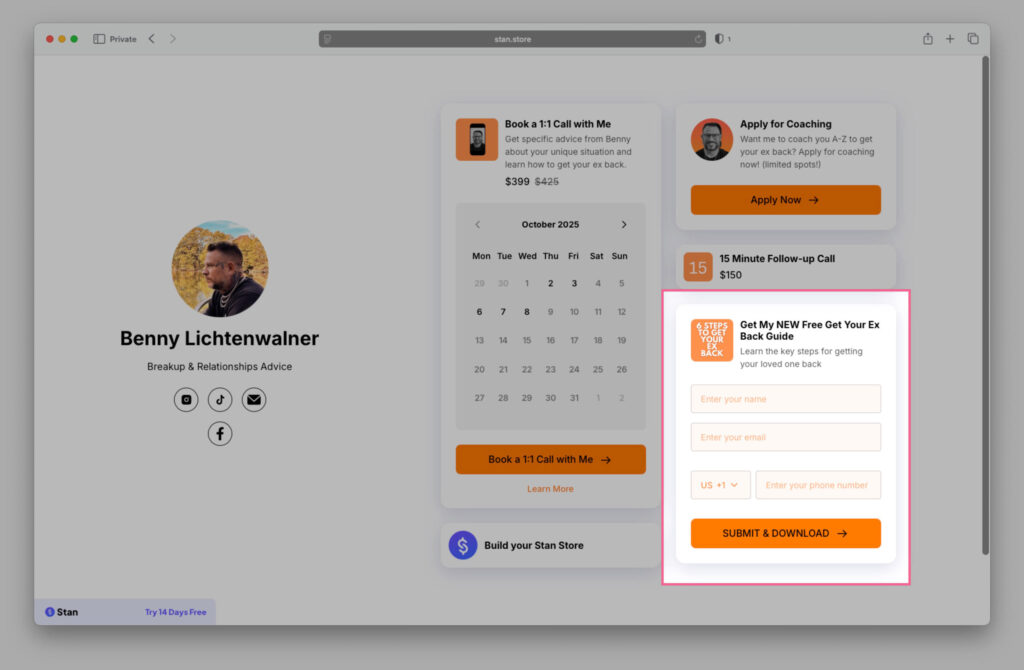
Benny offers relationship and breakup advice. His free guide is designed to solve the most urgent and emotional problem his audience faces: how to win back a partner after a breakup.
Why it works
- It addresses a highly specific pain point (“I want my ex back”).
- It offers immediate hope and direction at a time when people are actively searching for answers.
- It aligns perfectly with his paid offers, like 1:1 calls and coaching.
This is a textbook example of using a lead magnet to capture attention during a high-emotion moment and seamlessly guide people toward deeper, paid support.
2. Amy | Mental Health Coach
Lead magnet: “Release Your Anxiety” Guide
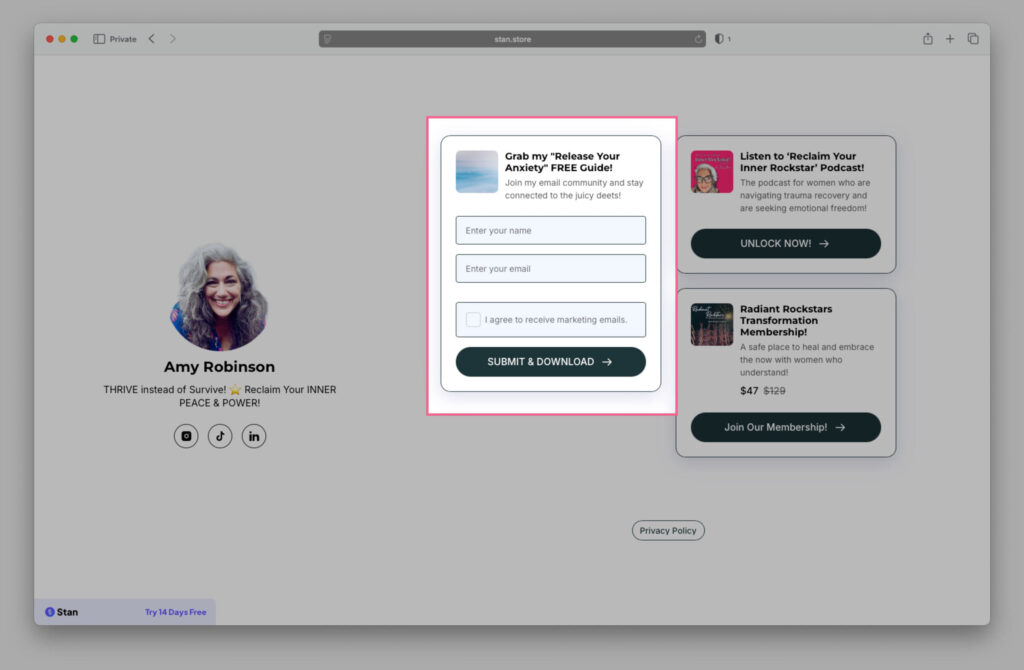
Amy helps women navigate trauma recovery and reclaim their peace. Her free guide addresses one of her audience’s most pressing challenges: dealing with anxiety. By offering practical steps and reassurance, she builds trust with people in a vulnerable place.
Why it works
- It promises relief from a highly emotional, everyday struggle.
- The language (“Release Your Anxiety”) is clear, empathetic, and solution-focused.
- It connects naturally to her paid membership program and podcast.
Instead of just collecting email addresses, this lead magnet positions her as a trusted guide and begins a relationship centered on ongoing support and transformation.
3. Chanelle | Social Media Coach
Lead magnet: “31 Days of Free Content Ideas & Prompts”
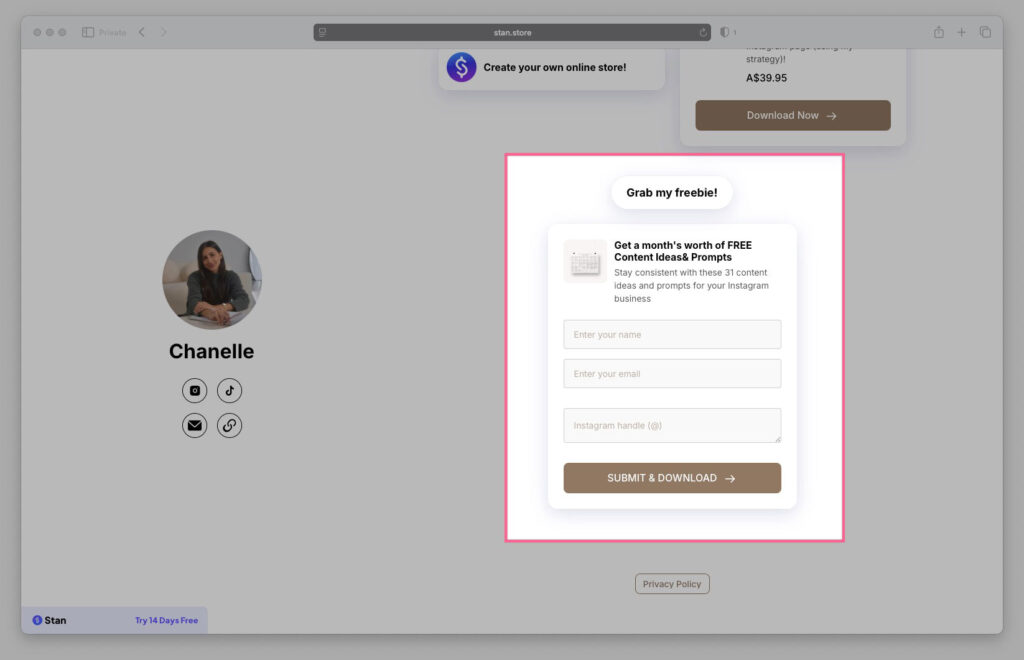
Chanelle specializes in Instagram growth and coaching. Her freebie gives her audience an entire month of content prompts, helping them stay consistent and avoid the dreaded “what do I post today?” problem.
Why it works
- It tackles one of the biggest pain points for small business owners on Instagram: running out of ideas.
- The promise is clear and measurable: a full 31 days of content ideas.
- It aligns directly with her paid offer, The Instagram for Growth Guide, by first solving the content creation hurdle and then offering deeper strategy support.
This kind of practical, ready-to-use resource is ideal for creators teaching social media because it gives an instant win and paves the way for clients to seek more personalized coaching.
4. Stefano | Social Media Consultant
Lead magnet: “How to Create Sales Funnels on Autopilot” Guide
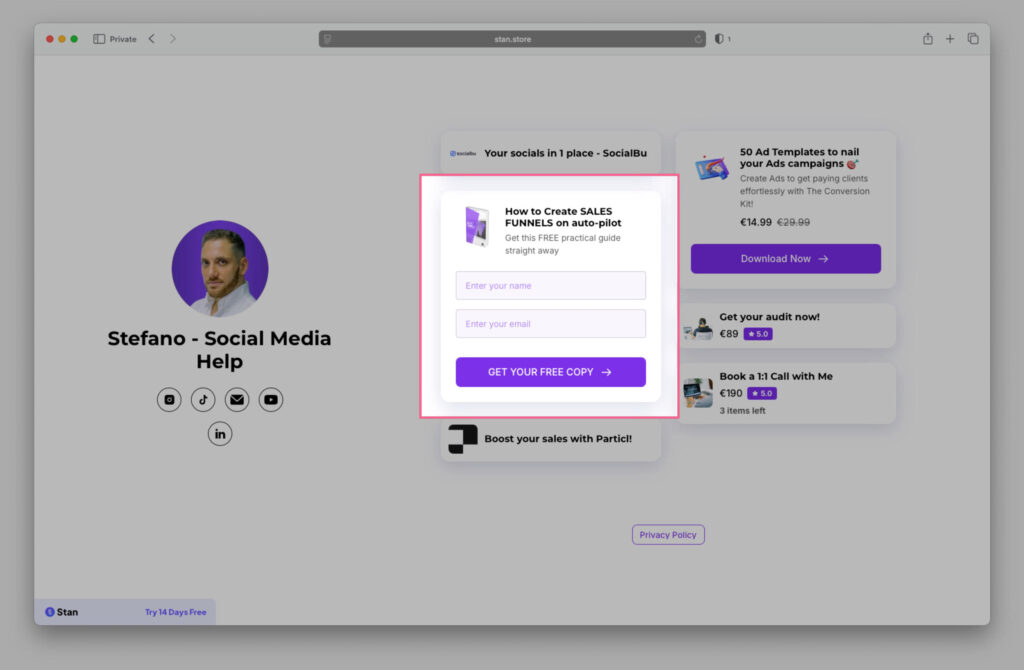
Stefano helps businesses optimize their social media presence and convert followers into paying clients. His free guide simplifies one of the biggest challenges for small business owners: building sales funnels.
Why it works
- It solves a business-critical problem: turning attention into revenue.
- The title highlights automation, appealing to busy entrepreneurs who want results without extra work.
- It ties directly into his paid offers—ad templates, audits, and 1:1 coaching
By offering a practical, strategy-driven resource, this lead magnet attracts serious business owners who are already thinking about scaling, the ideal audience for his services.
5. Canov | Instagram Growth Coach
Lead magnet: “100,000 Followers Guide”
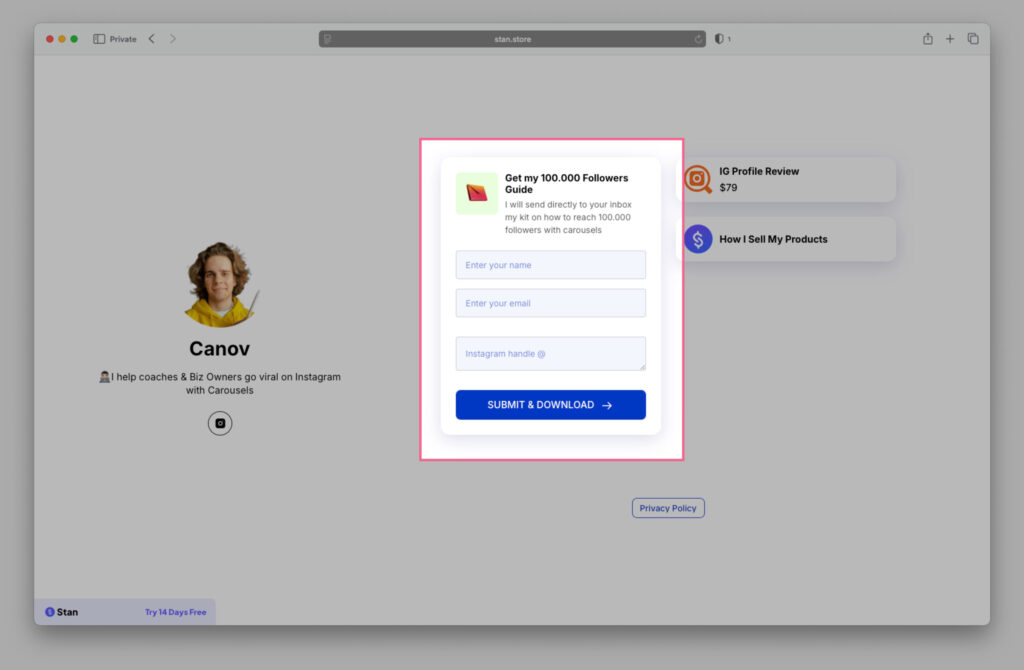
Canov helps coaches and business owners grow on Instagram using carousels. His free guide promises to reveal the exact strategies he used to hit 100,000 followers.
Why it works
- The headline is highly specific (“100,000 Followers”).
- It speaks directly to his target audience of coaches and business owners who want to scale their Instagram presence.
- It positions him as an authority who has already achieved what his audience wants, increasing trust in his paid offers.
The clear promise and built-in social proof make this lead magnet a powerful list-builder for anyone teaching growth on social platforms.
6. Gannon | Automation Strategist
Lead magnet: Free Automation Workshop + Free Manychat Template
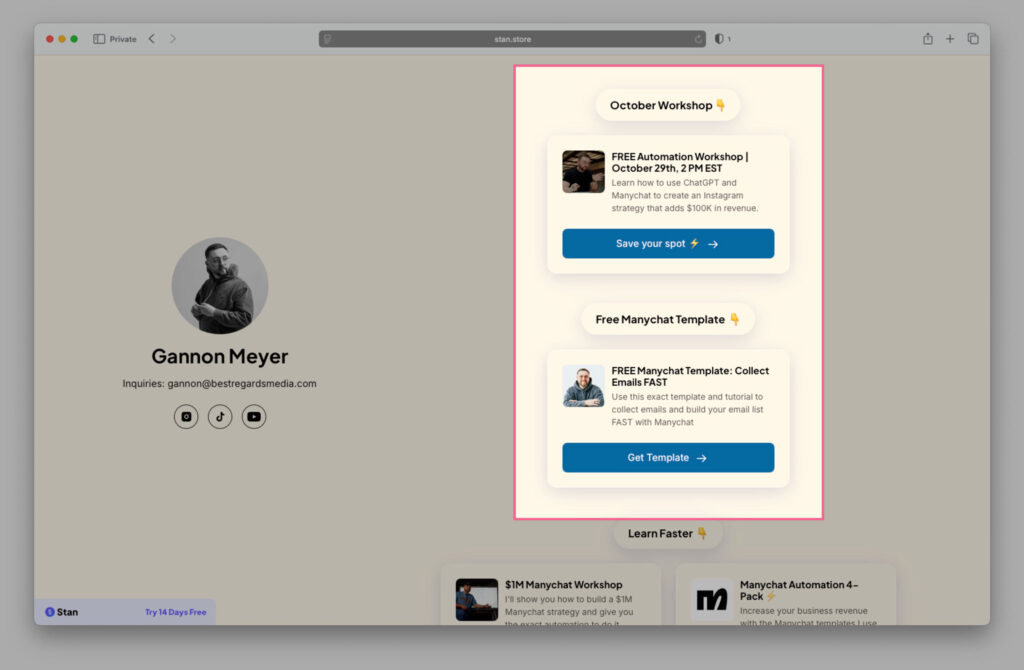
Gannon helps businesses scale with tools like ChatGPT and Manychat. His lead magnets combine a live workshop with a ready-to-use template, both designed to attract entrepreneurs who want faster results with automation.
Why it works
- The workshop promises a high-value outcome—an Instagram strategy that could generate $100K in revenue—and the live format builds urgency and exclusivity.
- The Manychat template delivers an immediate, plug-and-play solution for collecting emails, appealing to business owners who want quick results.
- Both freebies align directly with his expertise in automation, naturally leading into consulting or done-for-you services.
This combination shows how creators can use both live and static resources to capture different segments of their audience.
7. Monty | Instagram Strategist
Lead magnet: “Negative Hook Cheat Sheet”
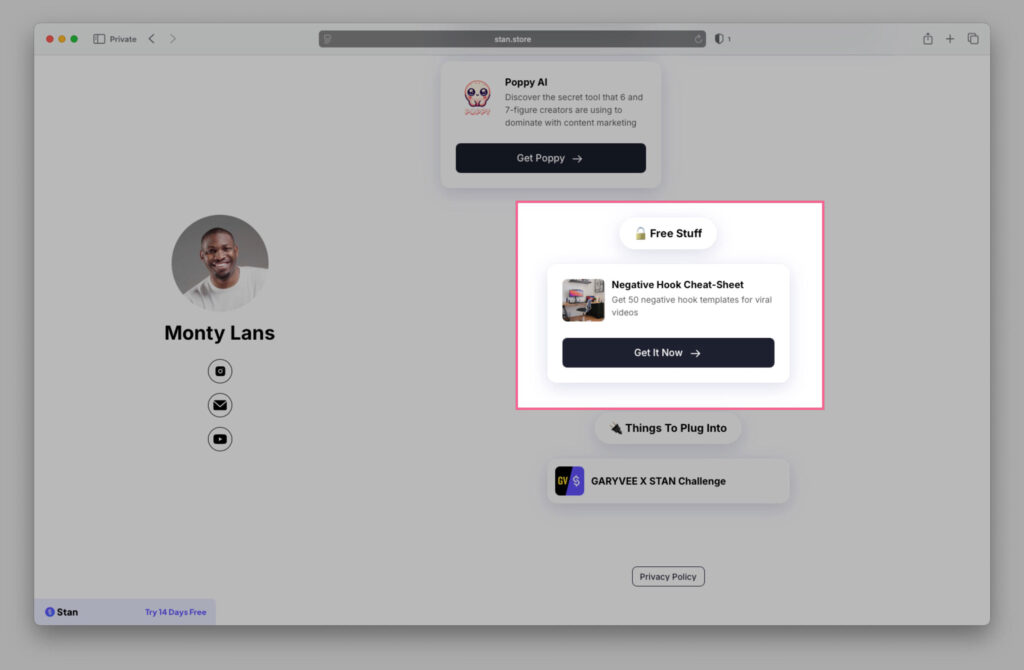
Monty helps coaches, entrepreneurs, and creators grow on Instagram with viral reels strategies. His free cheat sheet delivers 50 proven hook templates designed to grab attention and make videos go viral.
Why it works
- It showcases his authority by giving away a resource based on the same hooks that built his 150k+ Instagram following.
- The phrase “cheat sheet” makes it feel quick, simple, and actionable.
- It ties neatly into his broader offers, such as monetization platforms, automation tools, and video marketing services.
This is a strong example of how a tightly focused resource (just hooks) can deliver outsized value, attract the right creators, and funnel them into higher-ticket services.
8. Stone | Social Media Growth Coach
Lead magnet: “Proven 4-Step Guide to Grow & Monetize”
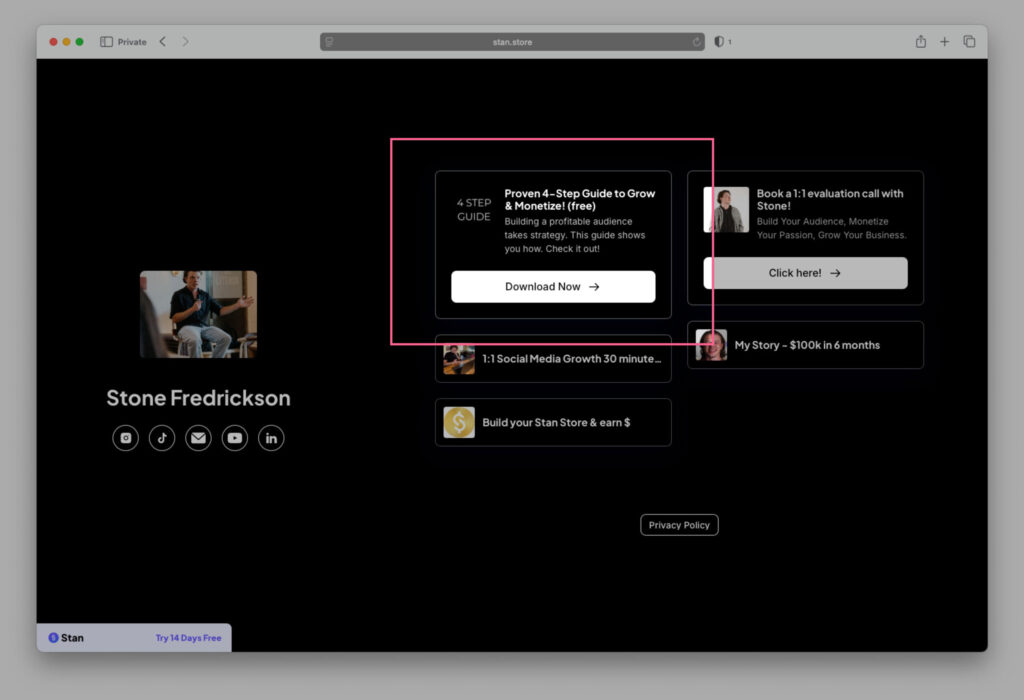
Stone helps people build audiences and turn them into income. His free guide lays out a straightforward four-step framework, showing beginners exactly how to start growing and monetizing.
Why it works
- The promise is clear: not just growth, but monetization—the end goal most creators care about.
- Breaking it into four steps makes it easy to digest, even for beginners.
- It builds authority by giving away a proven system upfront, which naturally leads into his paid coaching sessions and evaluation calls.
This kind of structured framework works especially well because it gives subscribers both a roadmap and confidence that they’re learning from someone who has already done it.
9. Alex | Travel Creator
Lead magnet: “100 Bucket List Things to Do in Australia”
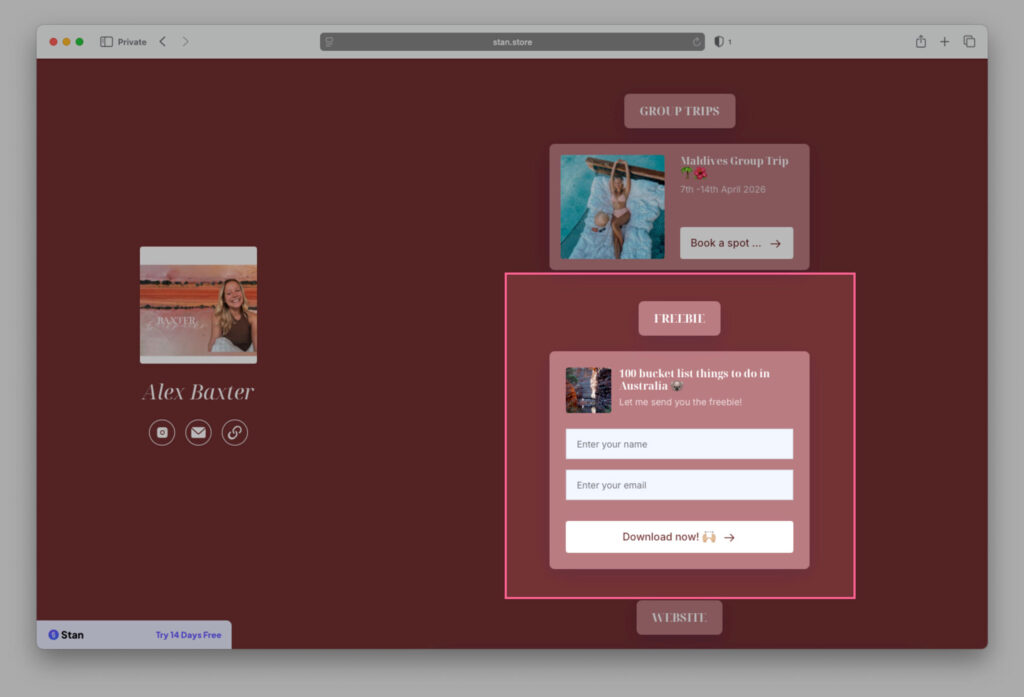
Alex inspires adventure and travel experiences. Her freebie is a bucket list of must-do activities in Australia—a perfect resource for her audience of travelers and explorers looking for inspiration.
Why it works
- It solves a common travel pain point by showing people what to do beyond the obvious tourist spots.
- The “bucket list” angle makes it feel fun, shareable, and aspirational, encouraging subscribers to keep it handy.
- It connects to her paid offers, such as group trips.
This kind of location-specific freebie is smart for travel creators because it attracts a highly targeted audience already dreaming about or planning trips to that destination.
10. Brienne | Instagram Growth Coach
Lead magnet: “Free Instagram Bio Bootcamp”
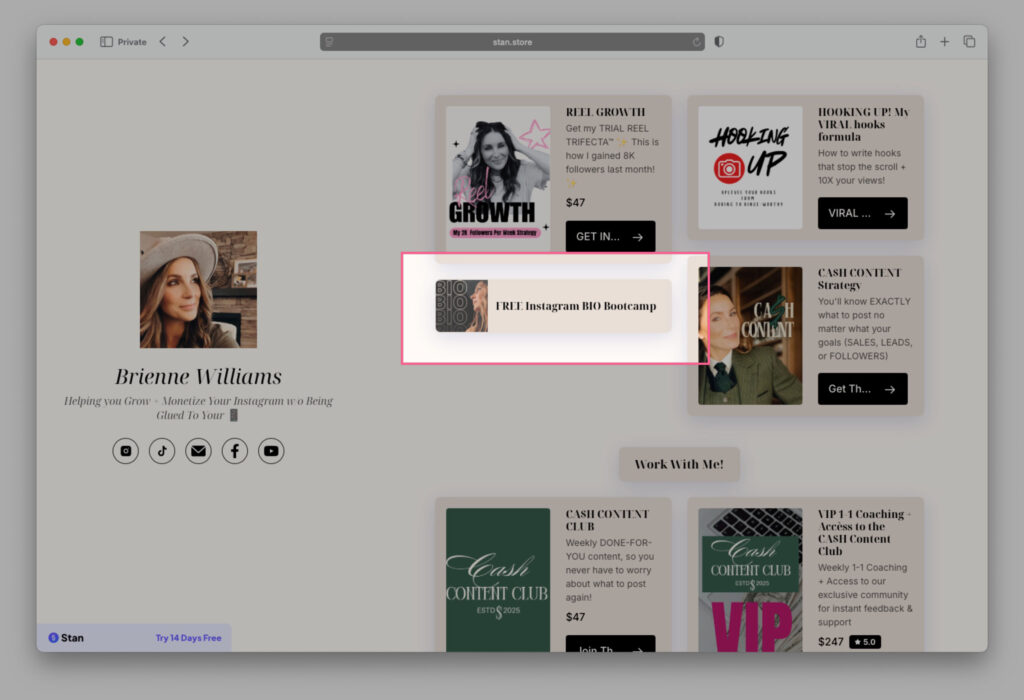
Brienne teaches people how to grow and monetize their Instagram without burning out. Her free bootcamp zeroes in on one of the most overlooked but important parts of Instagram growth: writing a bio that converts profile visits into followers.
Why it works
- It solves a very specific, high-impact problem: optimizing the Instagram bio for growth.
- The word “bootcamp” makes it feel hands-on and results-driven.
- It naturally feeds into her higher-ticket content strategy products and memberships by first proving she can deliver quick wins.
By choosing such a targeted angle, she ensures the people signing up are serious about Instagram growth and more likely to invest in advanced training.
How to Promote Your Lead Magnet
Even the best lead magnet won’t grow your audience if no one sees it. Many beginners create something useful, share the link once or twice, and then wonder why signups don’t roll in.
Promotion is just as important as creation. Your goal is to put your lead magnet where your ideal audience already spends time. Here are four of the most effective ways to drive signups:
1. On Your Website or Blog
Your website is often the first place people look for more information, so make sure your lead magnet is easy to find. Don’t bury it on a single page—weave it throughout your site with tactics like:
- Adding a pop-up or slide-in that appears after someone spends time on a page.
- Placing inline calls-to-action (CTAs) inside blog posts related to the lead magnet.
- Using a banner in your site’s header or footer so it shows up across multiple pages.
For instance, if you run a recipe blog, a post on “5 Quick Weeknight Meals” could feature a “Weekly Meal Planner Template” as a free download. It feels natural because it’s directly tied to what the reader is already looking for.
2. On Social Media
Social platforms are where your audience already spends most of their time, making them a powerful place to promote lead magnets. But avoid simply posting “Download my free guide.” Instead, repurpose your lead magnet into bite-sized content that teases its value. For example, you can:
- Share a single tip from your lead magnet in a reel, carousel, or thread, then position the full resource as the next step.
- Post testimonials or quick wins from people who used it.
- Keep the link in your bio or profile so it’s always accessible.
Creators using Stan often link their lead magnets directly through their Stan store, so followers from TikTok, Instagram, or YouTube can access the free resource in the same place they find everything else you offer.
3. With Paid Ads
If you’re willing to invest, paid ads are a fast way to get your lead magnet in front of a highly targeted audience. Because you’re asking for a signup instead of a purchase, ad costs are often lower.
Platforms like Facebook, Instagram, TikTok, and YouTube allow you to run simple lead form ads where users don’t even have to leave the app to subscribe.
4. Collaborations and Partnerships
Working with other creators or businesses in your niche can expand your reach far beyond your own audience. Collaboration introduces you to people who are already interested in your topic and more likely to engage. You might:
- Swap mentions in newsletters.
- Run a joint webinar or challenge where both of you share the lead magnet.
- Guest post or appear on a podcast and offer the resource as a bonus for listeners.
For instance, a personal finance creator could team up with a tax consultant for a “Freelancer’s Tax Prep Checklist.” Each promotes it to their audience, and both benefit from the crossover exposure.
Lead Magnet Mistakes to Avoid
Lead magnets seem simple, but beginners often make mistakes that limit results. Knowing these upfront helps you create something your audience actually wants. Here are seven to watch out for:
1. Making It Too Complicated
A 50-page ebook or a two-hour video course might feel valuable, but for a beginner audience it’s overwhelming. Most people never finish it, and you lose the chance to build trust. Keep it simple and focused on a quick win.
2. Offering Something Irrelevant
Your lead magnet should directly connect to your paid offers. If you sell online art classes, a random “10 Productivity Hacks” guide won’t bring in the right audience. Unrelated freebies only fill your list with subscribers who will never convert.
3. Solving the Wrong Problem
Sometimes creators focus on what they want to share instead of what the audience actually struggles with. If your lead magnet doesn’t address a pressing pain point, people won’t feel motivated to sign up. Always start with the audience’s needs, not yours.
4. Weak Call-to-Action (CTA)
Even a great lead magnet won’t convert if you don’t clearly tell people what to do. A vague “Click here” is easy to ignore. Use clear, benefit-driven CTAs like “Download the free checklist” or “Get the template today.”
5. Poor Design or Delivery
If your lead magnet looks messy or is hard to access, people will lose trust quickly. Sloppy formatting, broken links, or a confusing download process make you look unprofessional. A clean design and instant delivery create a much better first impression.
6. Forgetting to Nurture Subscribers
The lead magnet is the start of the relationship, not the end. Too many creators deliver the freebie and then go silent. Follow up with valuable content, stories, or tips so your new subscribers stay engaged and warm up to your paid offers.
7. Not Tracking Performance
If you never measure how your lead magnet performs, you’ll have no idea if it’s working. Track your signups, conversion rates, and engagement so you can make small but critical tweaks such as changing the title, format, or CTA.
Your First Lead Magnet Matters More Than You Think
You’ve seen what a lead magnet is. You’ve seen why it works, the different types you can create, how other creators are using them to grow, and even the mistakes to avoid.
At this point, the only thing standing between you and your first lead magnet is action. Not another tutorial. Not another strategy video. Just picking one problem your audience has, creating a simple resource to solve it, and putting it out there.
Will it be perfect? Probably not. But it doesn’t have to be. What matters is that it exists—because once it does, you’ve built the bridge that turns strangers into subscribers and subscribers into customers.
So take the first step and create your lead magnet today. The sooner you start, the sooner you’ll see what’s possible.
